Rome packs in more sights and attractions than any other city in Europe. There are so many things to see in Rome, we’ve put together a 3-day Rome itinerary to help you plan your time in the Eternal City.
We’ve included where to stay in Rome, how to get around, and a fabulous 3-day Rome itinerary with an optional 4th day to ensure you see the best attractions.
We’ve included all of Rome’s best attractions, including some surprisingly free attractions if you are on a budget – we have a complete list of wonderful things to do in Rome for free here.
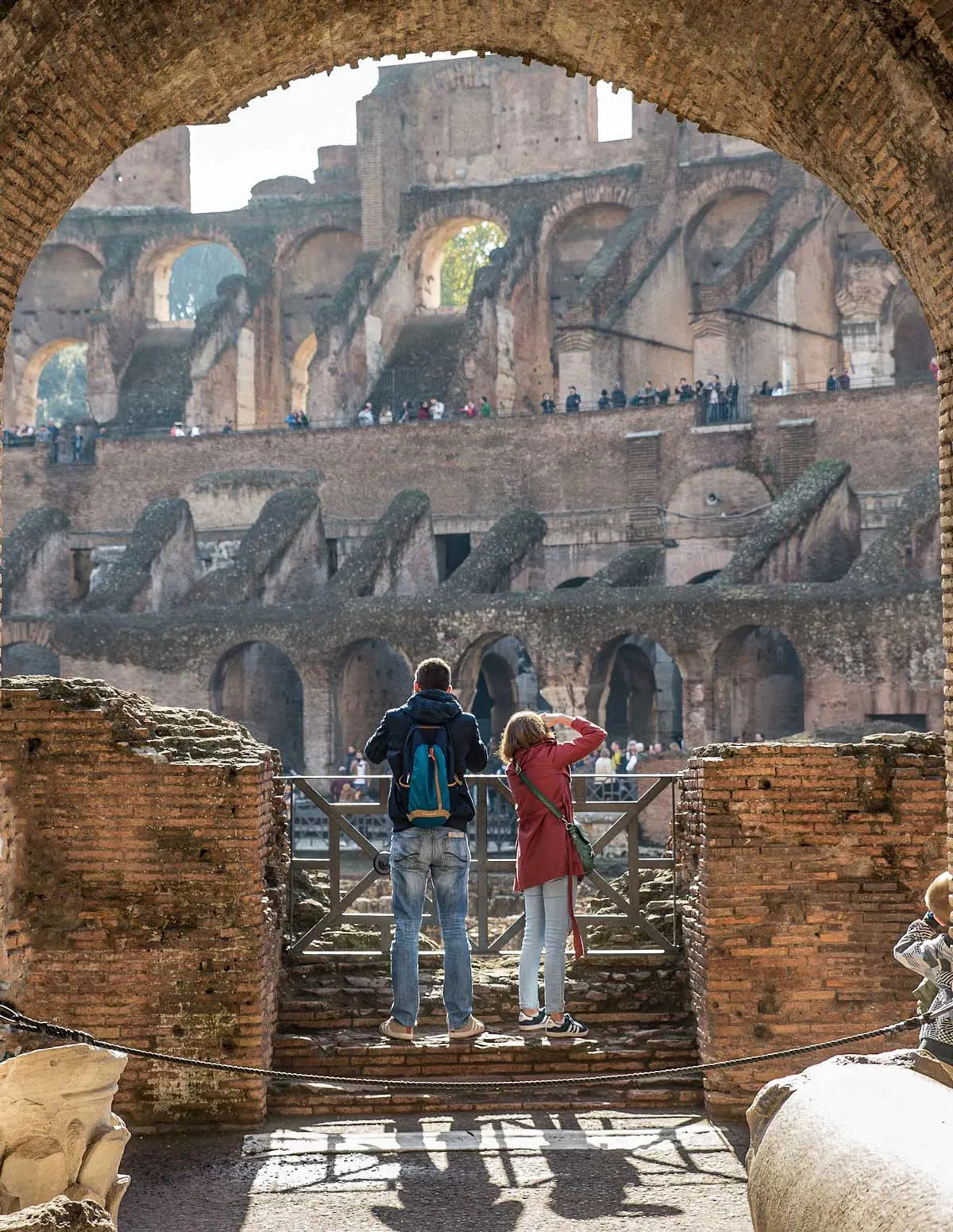
Is 3 Days Enough to Visit Rome?
You can definitely see the best of Rome in three days, but I do recommend adding a 4th day or at least half a day if possible.
At the end of this Rome 3-day itinerary, you’ll find that I have included an optional 4th day, allowing you to take more time at each site and see a few more. This is especially helpful during the crowded summer months, when you may spend hours waiting in line.
You Might Also Like: Rome is a fantastic base to see more of Italy- see our guide to the best day trips from Rome to start planning your itinerary. If you want a quick side trip from Rome, check out our guide to Italy’s Most Beautiful Islands. Some are closer to Rome than you think. Rome is also a fantastic starting or finishing point for some incredible Italian road trip itineraries.
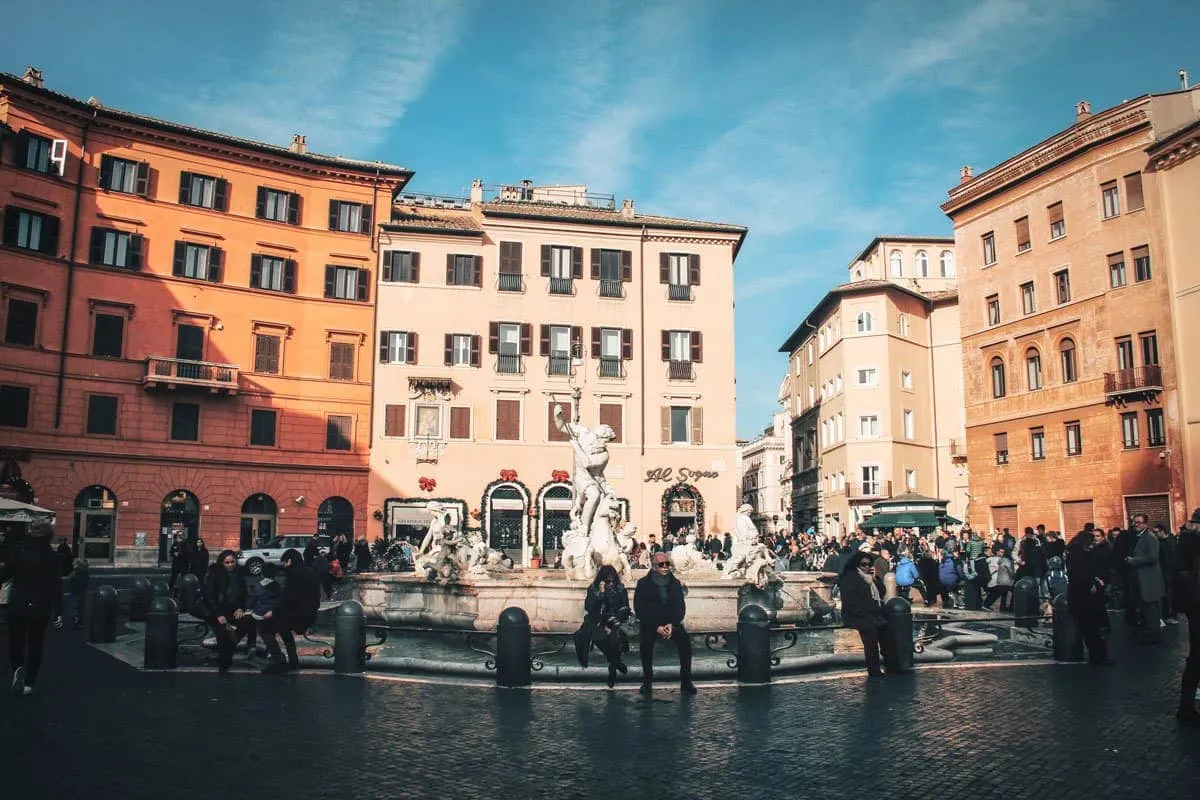
You Might Also Like: Discover Italy’s third largest city’s authentic, spirited and charmingly chaotic character. These are the Best Things to see and do in Naples.
The Perfect 3 Day Rome Itinerary
With so much to see in Rome, it is wise to plan your time before you arrive. Also, consider attractions that may require an early start or pre-purchase tickets, such as Vatican attractions or the Galleria Borghese. You may even want to pre-book a food tour in Rome to get your culinary bearings.
When planning your time in Rome, buying Skip the Line tickets for the big attractions such as the Colosseum can save up to a couple of hours of your precious time.
We’ve mapped out a 3 day Rome itinerary with an optional 4th day to help you plan your perfect Roman holiday.
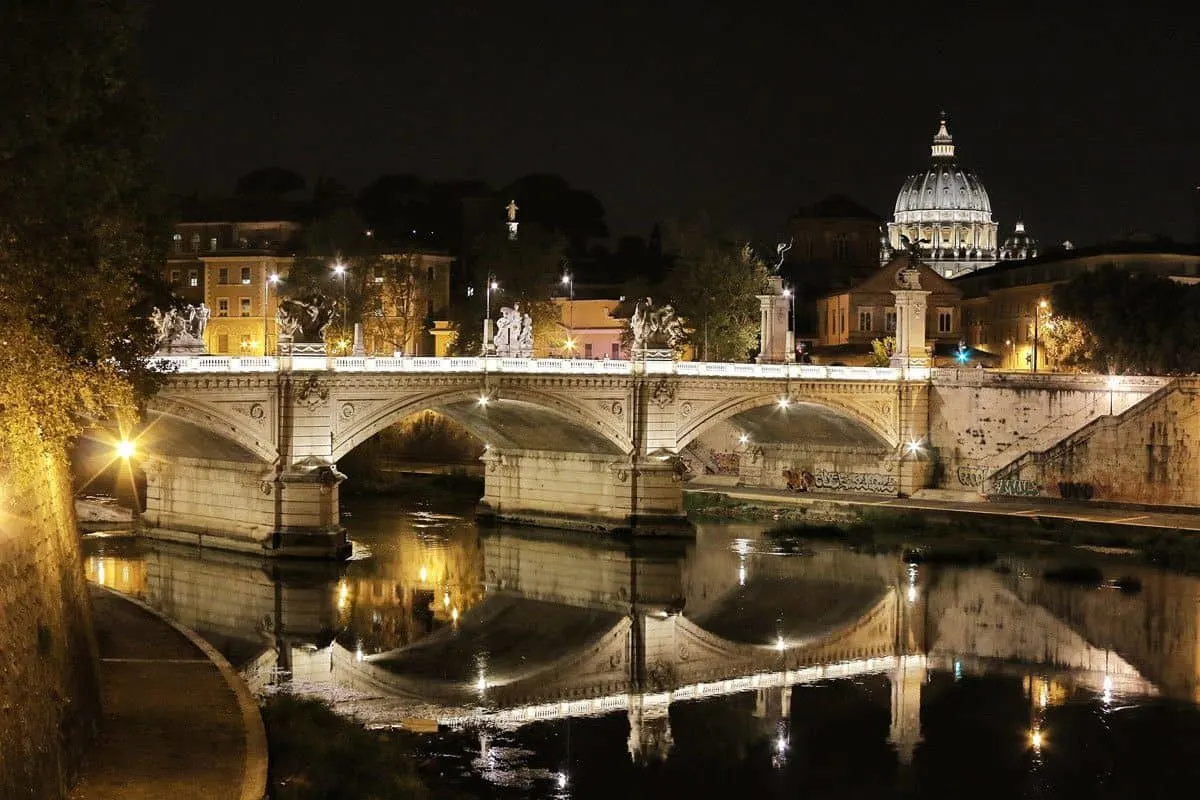
Day 1 Ancient Rome Colosseum and Ancient Sites
- The Colosseum
- The Roman Forum
- Palatine Hill
- Piazza Venezia
- The Vittorio Emanuele II Monument
The first day of your 3 day Rome itinerary begins with a visit to the Eternal City’s most iconic ancient sites – The Colosseum, The Roman Forum, and Palatine Hill.
Three of the oldest and most important historical sites in Rome are located in the same area, and all three are accessed with one ticket.
Tip: Allow around 3–4 hours to visit the ancient sites, including the Colosseum
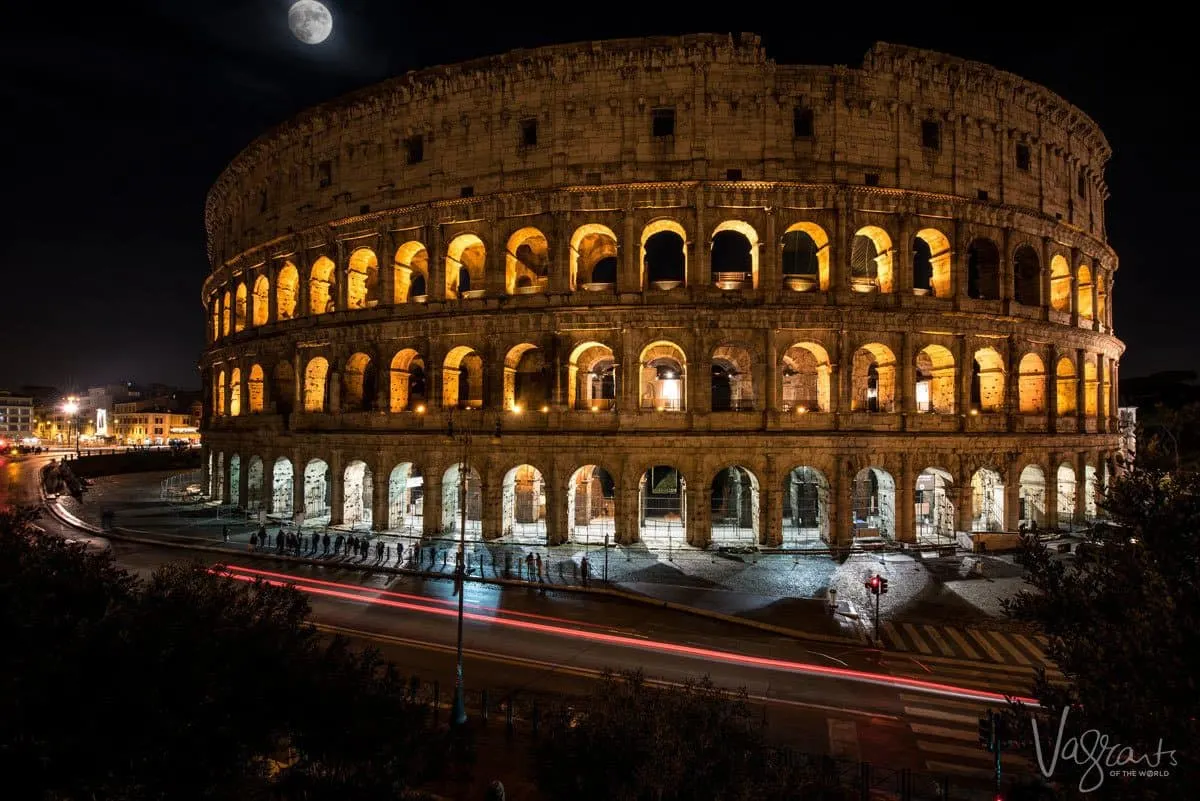
The Colosseum
Some consider the iconic monument of the Roman Empire, not just a must-see site in Rome but the most important attraction in Italy.
The Colosseum, built to hold up to 80,000 spectators, is still the largest amphitheater ever built. Surviving earthquakes, fires, wars, and riots, 2,000 years later, it continues to draw a crowd.
Once clad in ivory travertine marble, looted over the centuries, The Colosseum was used for the mass entertainment of the people of Rome. While the most notable forms of entertainment were gladiator combats and animal fights, the Colosseum could also be flooded for mock naval battles.
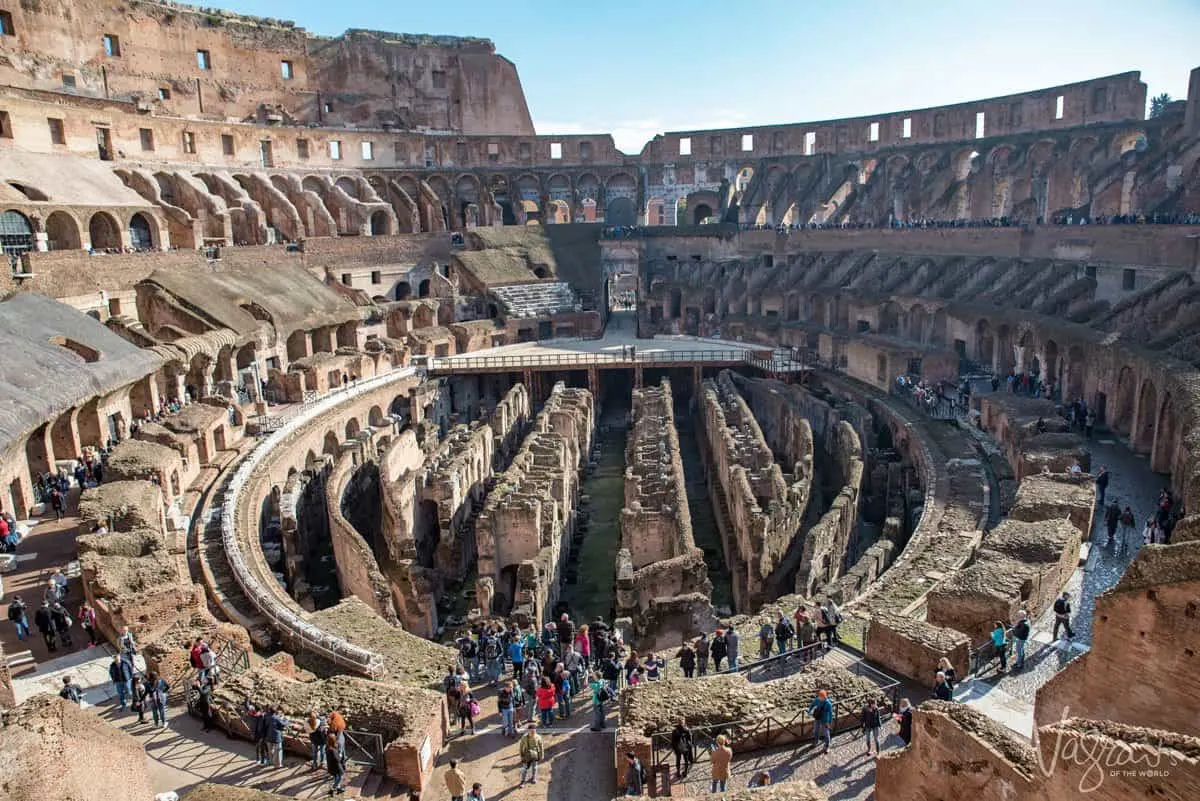
Best Time to Visit the Colosseum
Early morning. While you may not beat the queues entirely, you will still have the jump on the bigger crowds and save precious time for Rome’s other ancient sites.
If you have time, we recommend stopping by or close to the Colosseum at night for a great photo opportunity. It looks quite remarkable when lit up at night.
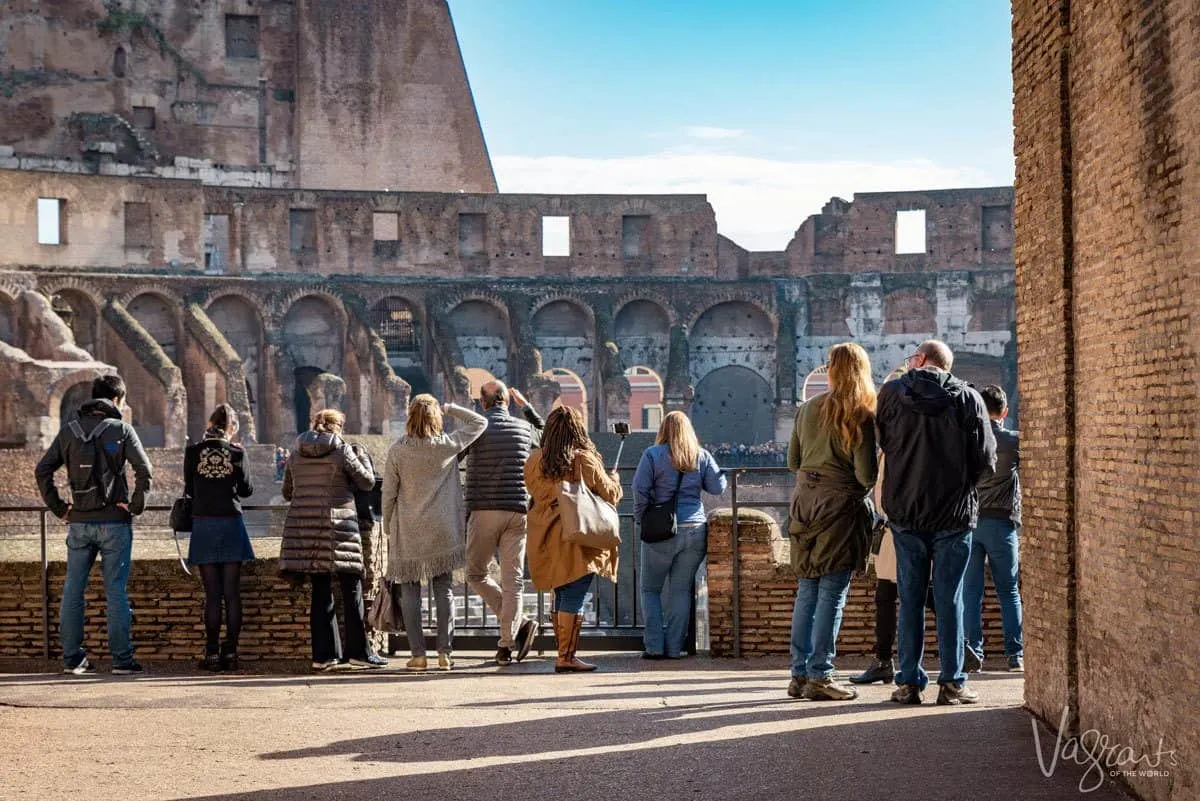
Colosseum Tickets
You can buy a combined ticket to all three sites (The Colosseum, The Roman Forum, and Palatine Hill), which gives fast-track entry to the Colosseum and entry to the Entry ticket to the Roman Forum and Palatine Hill, valid for 24 hours. Buy Colosseum, Roman Forum, and Palatine Hill entry tickets online here.
Note: Even with skip-the-line pre-purchased tickets, you still must clear security at The Colosseum, and the lines can be very long.
Tip For Visiting The Colosseum
On the first Sunday of every month, entry to the Colosseum is free. It is the worst time to visit and should be avoided if possible. Thousands of people descend upon the site causing long delays at security and a very crowded experience once inside.
For the best Colosseum experience, avoid the first Sunday of the month and book a Skip the Line ticket in advance online.
You can find detailed information about the opening hours for The Colosseum here.
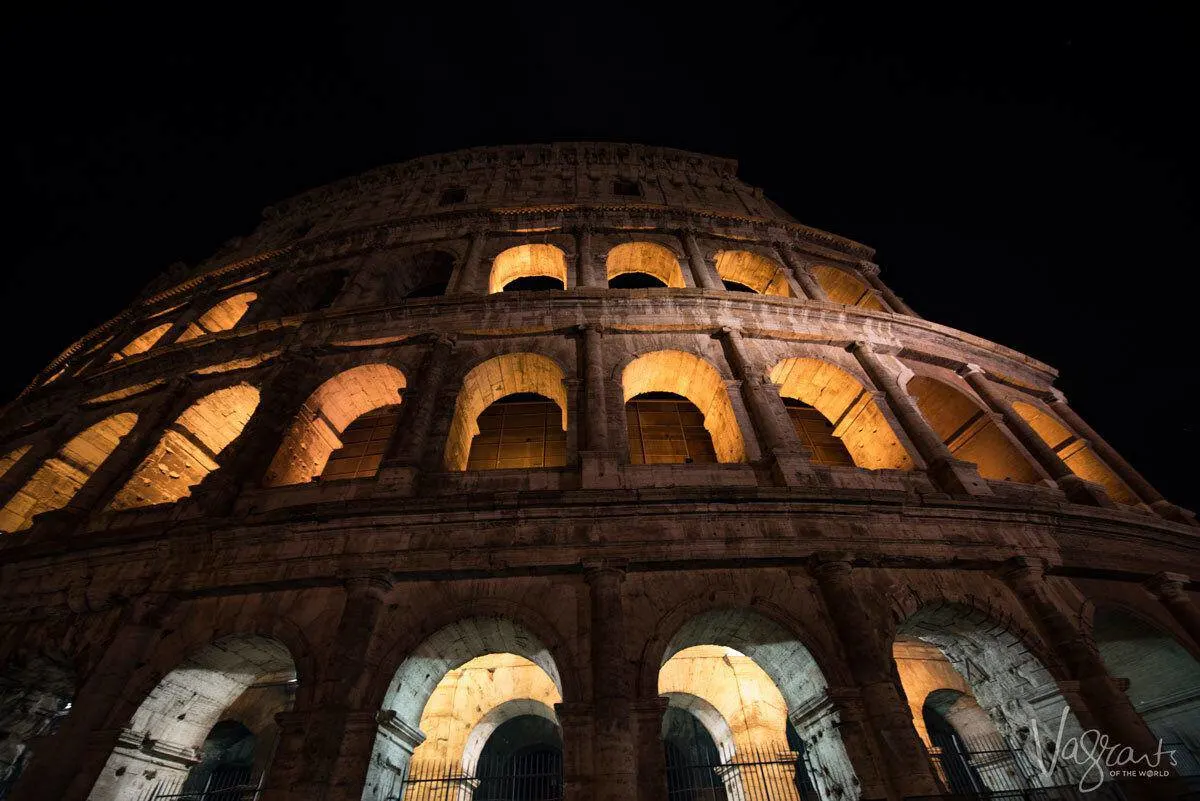
The Roman Forum
Next to the Colosseum is The Roman Forum. Once the center of the Roman Empire and the most magnificent site in all of Europe. Filled with the ruins of temples, palaces, government buildings, and shops, the Roman Forum offers a glimpse into the size and importance of the center to the Roman Empire.
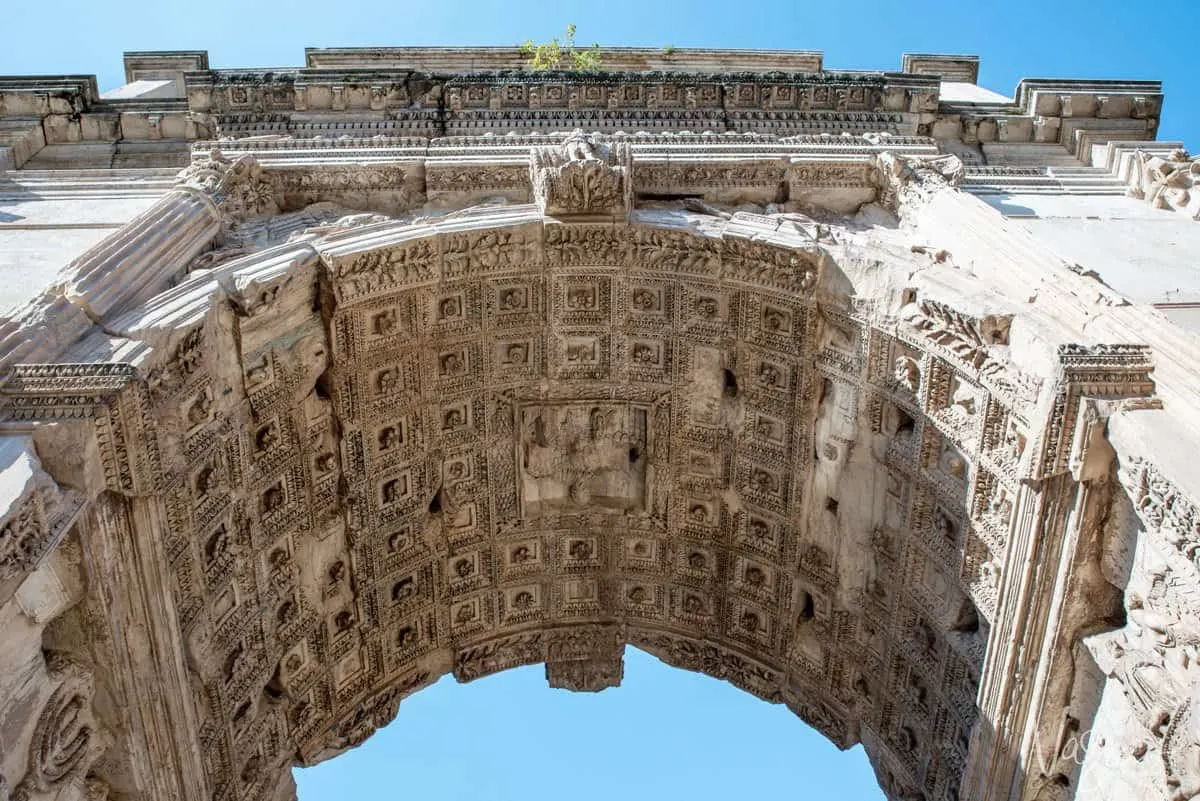
Roman Forum Tickets
Entry is included in the ticket to visit The Colosseum, The Roman Forum, and Palatine Hill.
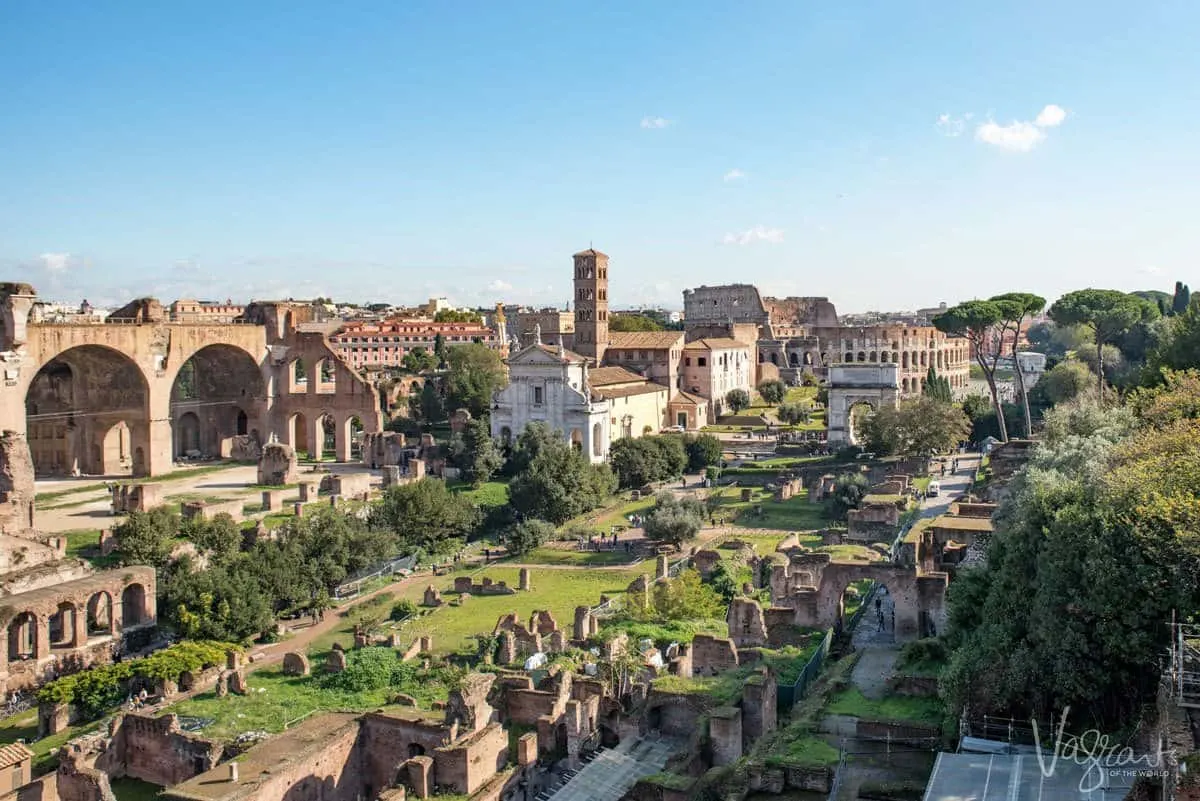
Palatine Hill
On the hill overlooking the Roman Forum is where Rome was founded. The residential area for Roman nobility, Palatine Hill, one of the seven hills of Rome, offers incredible views across the city, the Colosseum, Circus Maximus, and the Roman Forum ruin below.
The views from Palatine Hill give you a superb overview of the history of Rome.
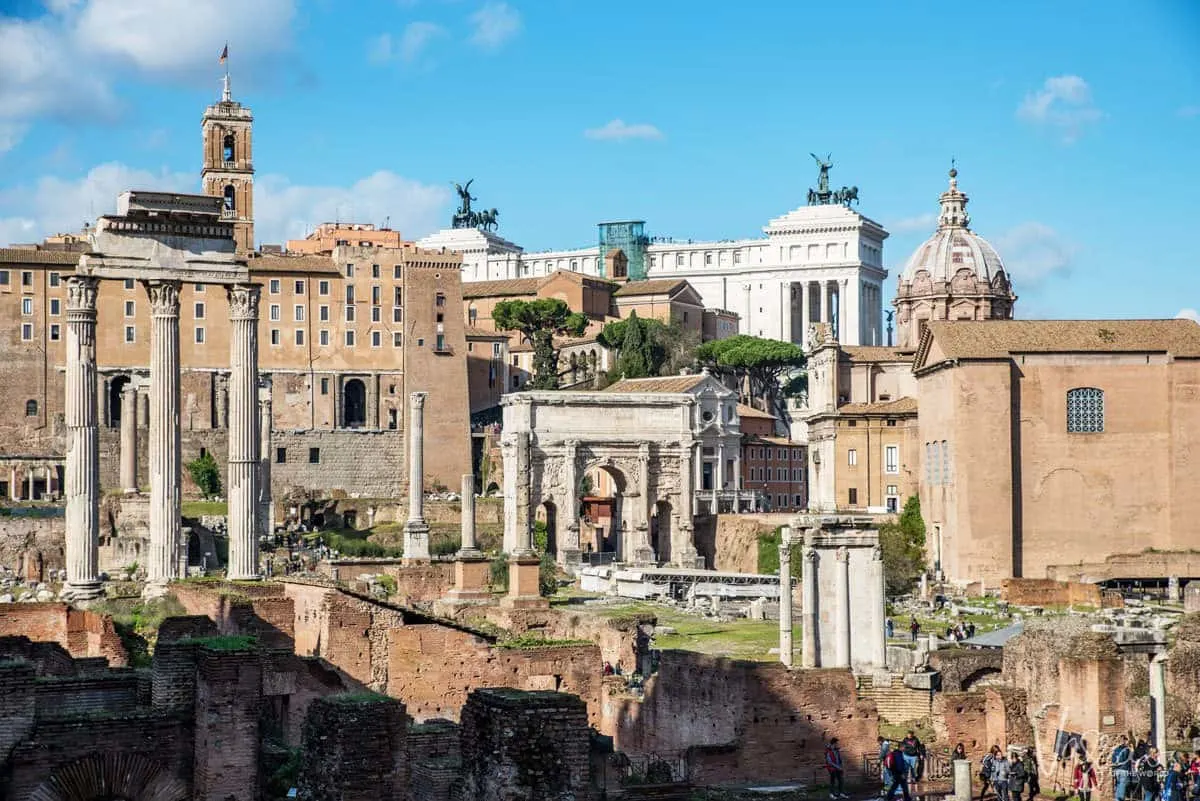
Once the most lavish place in the world. A place where emperors fought to live and where Imperial Palaces were extravagant beyond imagination.
The site of temples and the center for the legend of Romulus and Remus, Palatine Hill is loaded with a remarkable history.
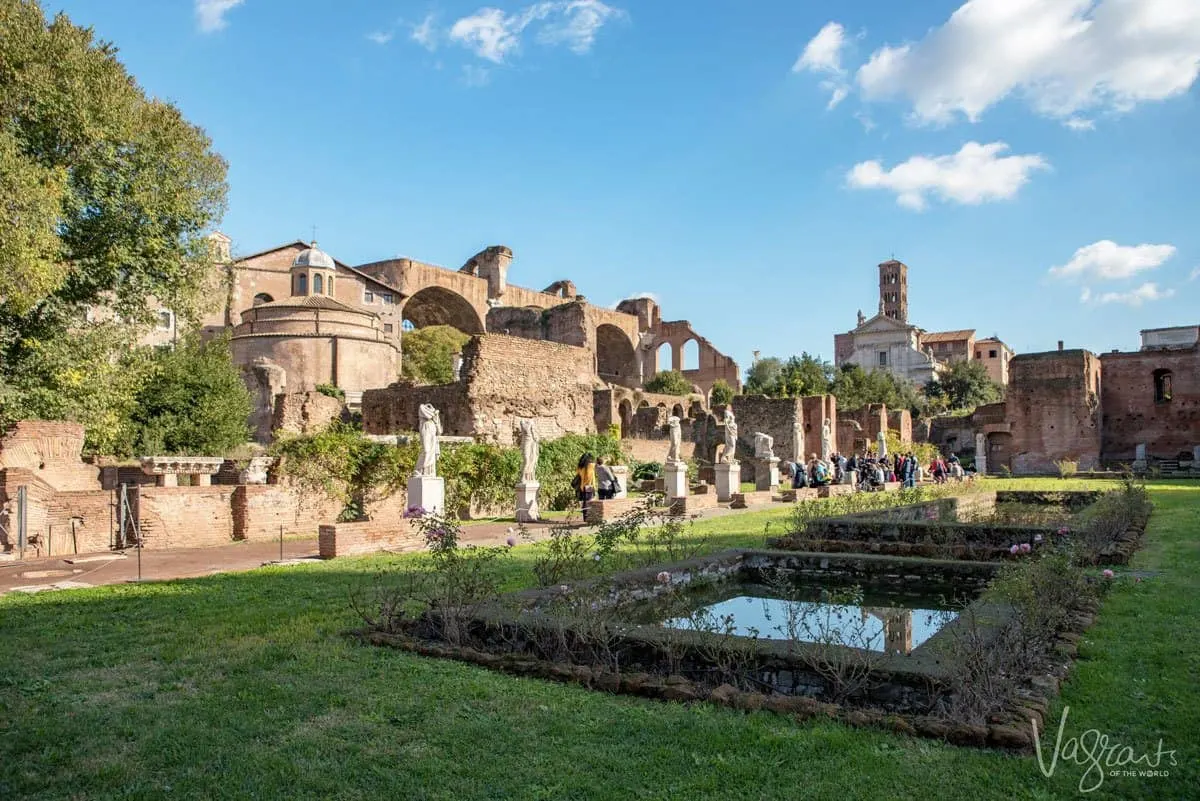
A beautiful and serene green haven, The Palatine is the perfect place to escape the crowds and the heat.
Wildflowers grow amongst the ruins in the shade of pine and olive trees. Enjoy the calm while strolling through the shaded Farnese Gardens, and you’ll find it’s not hard to imagine the opulent lives of the Emperors of Rome.
Palatine Hill Tickets
Entry is included in the combined ticket to visit The Colosseum, The Roman Forum, and Palatine Hill.
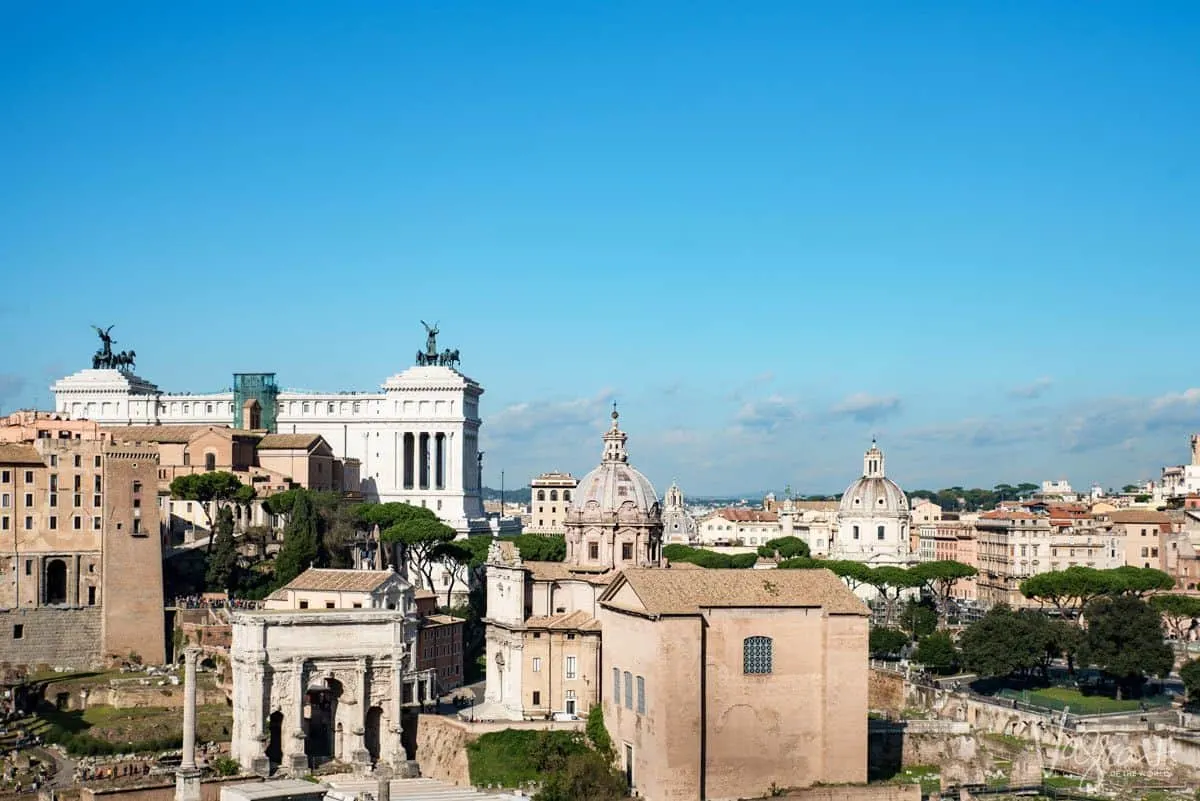
Did You Know?
Rome has more than 900 churches in the city. Make time to pop in and visit a few as you wander around. Many house priceless works of art, such as The Church of St. Ignatius of Loyola, considered a baroque masterpiece. Among some of the priceless works of art in the church, the magnificent Frescoes of Andrea Pozzo are worth seeing.
Centro Storico (Historic Centre)
Piazza Venezia
Located in the heart of Rome, it is hard not to end up in Piazza Venezia at least once while visiting Rome. At the center of four of Rome’s major crossroads, it is renowned for its chaotic traffic and proximity to some of Rome’s most important attractions.
In addition to its most prominent monument, The Vittorio Emanuele II Monument, there are also many other notable palaces and buildings around Piazza Venezia.
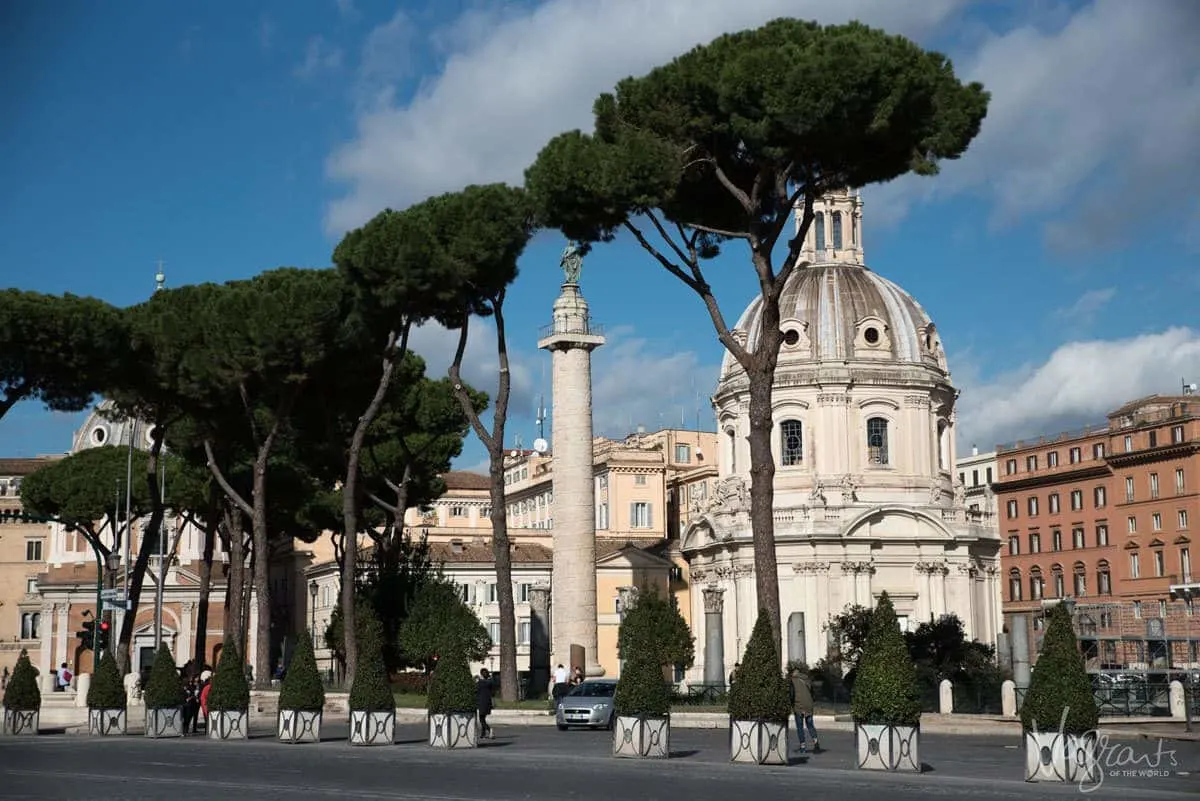
The Palazzo Venezia, which served as the embassy of the Republic of Venice in Rome, became the papal residence of Pope Pius IV in 1564. It is now the Museum of Medieval and Renaissance art – Museo di Palazzo.
Piazza Venezia was also where Italian dictator Mussolini delivered his speeches to crowds of supporters in the 1920s-1940s.
Palazzo Bonaparte is where Napoleon’s mother, Letizia Ramolino, lived from 1818 until her death.
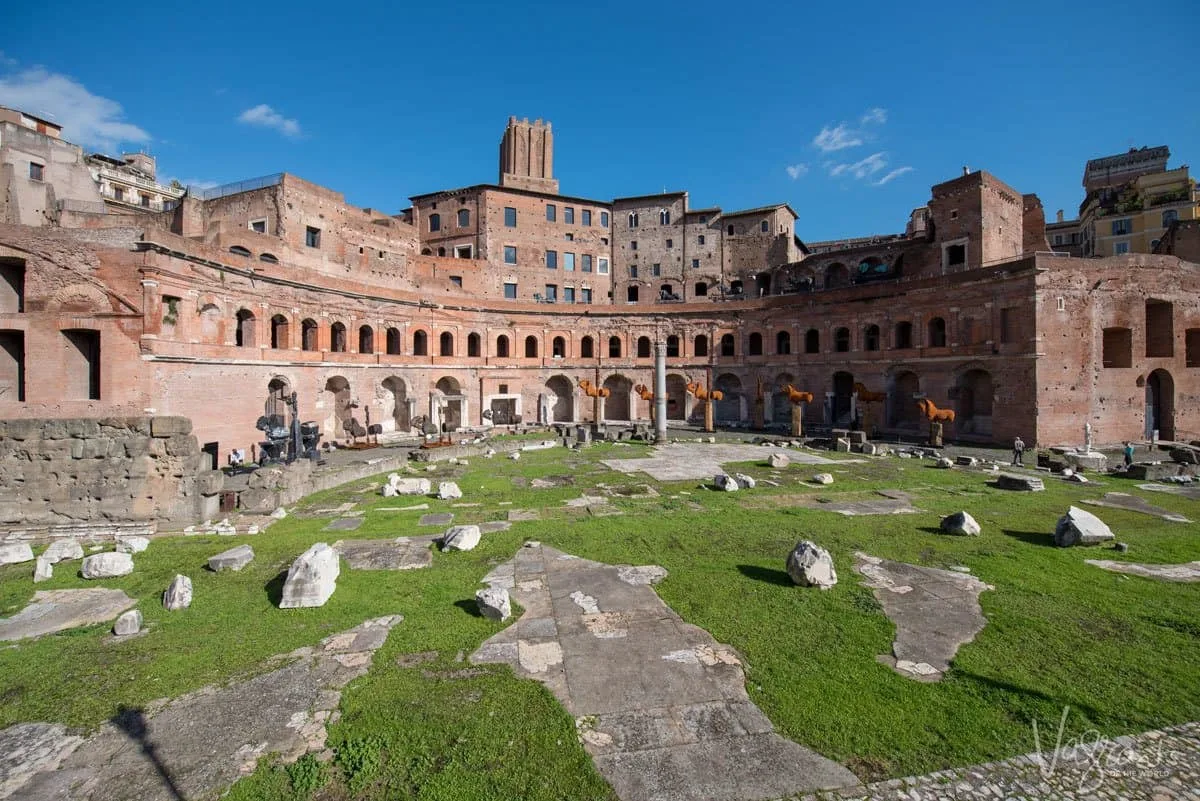
The Vittorio Emanuele II Monument
Located in the center of Piazza Venezia, the grandiose white marble monument was built between 1885 and 1911 as a tribute to Victor Emmanuel II, the first king of a unified Italy.
The top of the monument has a terrace for a 360° panorama of the city. Said to offer the best views of Rome, it is not surprising The Vittorio Emanuele II Monument is a favorite photo spot for visitors to Rome. The monument is also the site of Italy’s Tomb of the Unknown Soldier.
The Panoramic Lifts Opening Hours
The Panoramic Lifts operate every day 9.30 AM–7.30 PM (last admission 6.45 PM)
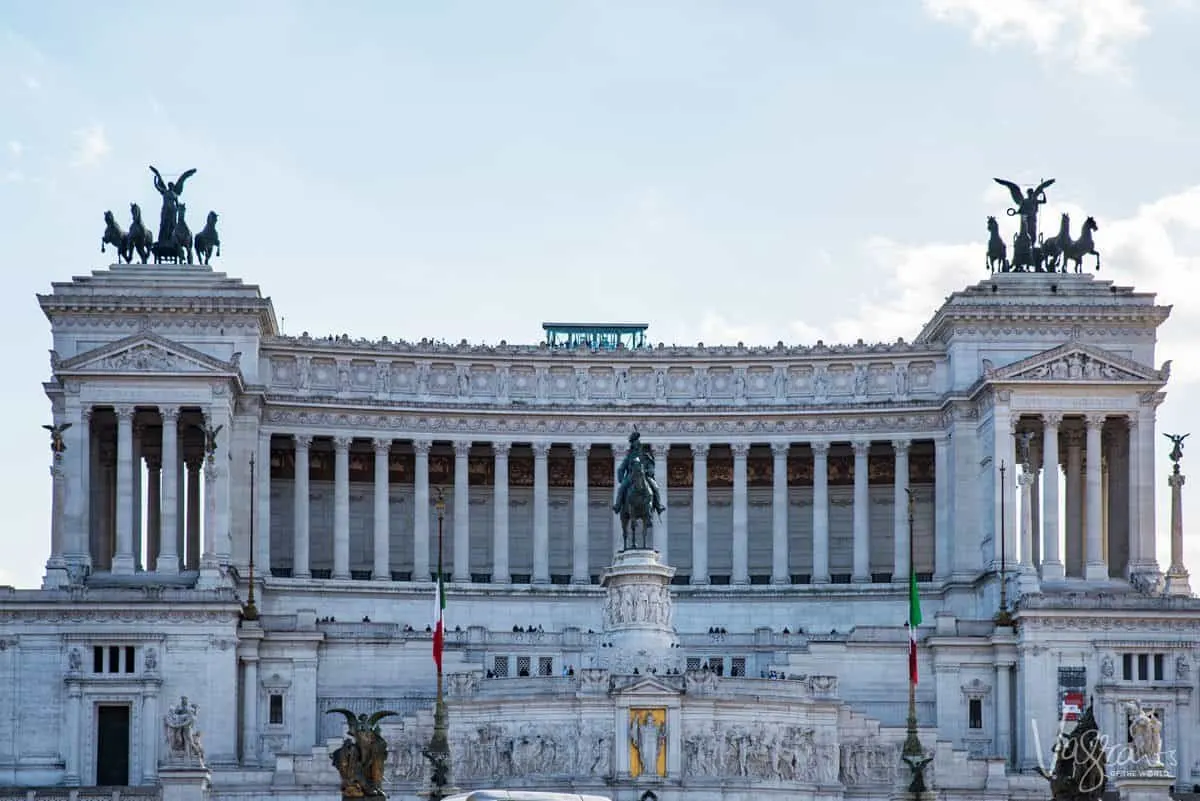
Day 2 Rome City Center
On day 2 of your three days in Rome itinerary, you’re going to head to the center and cross off a few big Italy bucket list items, like the famous Trevi Fountain.
- Piazza Campo de’ Fiori
- Piazza Navona
- The Pantheon
- Trevi Fountain
- Spanish Steps
- Villa Borghese
Piazza Campo de’ Fiori
Once a flower meadow, Piazza Campo de’ Fiori was built in 1456 by Pope Callistus III and quickly became Rome’s vital and prosperous center. It was also where Italian philosopher Giordano Bruno was burnt at the stake in 1600 for heresy. In his honor, a hooded monument created by Ettore Ferrari in 1889 stands in the square.
Today, the medieval square is a popular gathering space at any time of day. During the day, a lively market brimming with flowers and local produce makes it an excellent spot for a coffee and a little people-watching. At night, the square comes alive again with bars and restaurants.
Tour Tip: If you are interested in the culinary side of Rome, try one of our recommended Roman Cooking Classes. Classe range from one hour to full day wine and cooking.
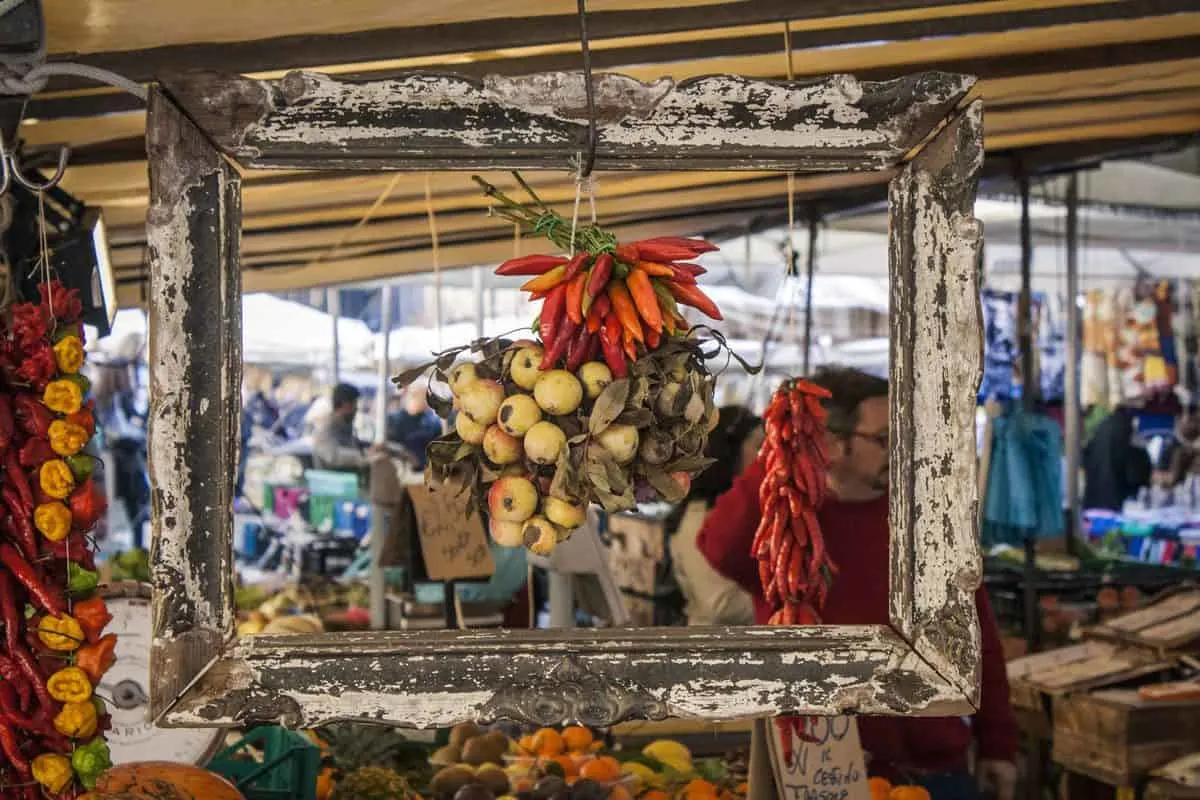
Piazza Navona
One of the most famous and beautiful squares in Rome. Piazza Navona, built on an ancient Roman stadium site, features three magnificent fountains, the most impressive, the Central Fountain of the Four Rivers, featuring an Egyptian obelisk.
True to its origins as an entertainment space for sporting events and festivals, the square still attracts a lively crowd of hawkers, street artists and performers, and tourists.
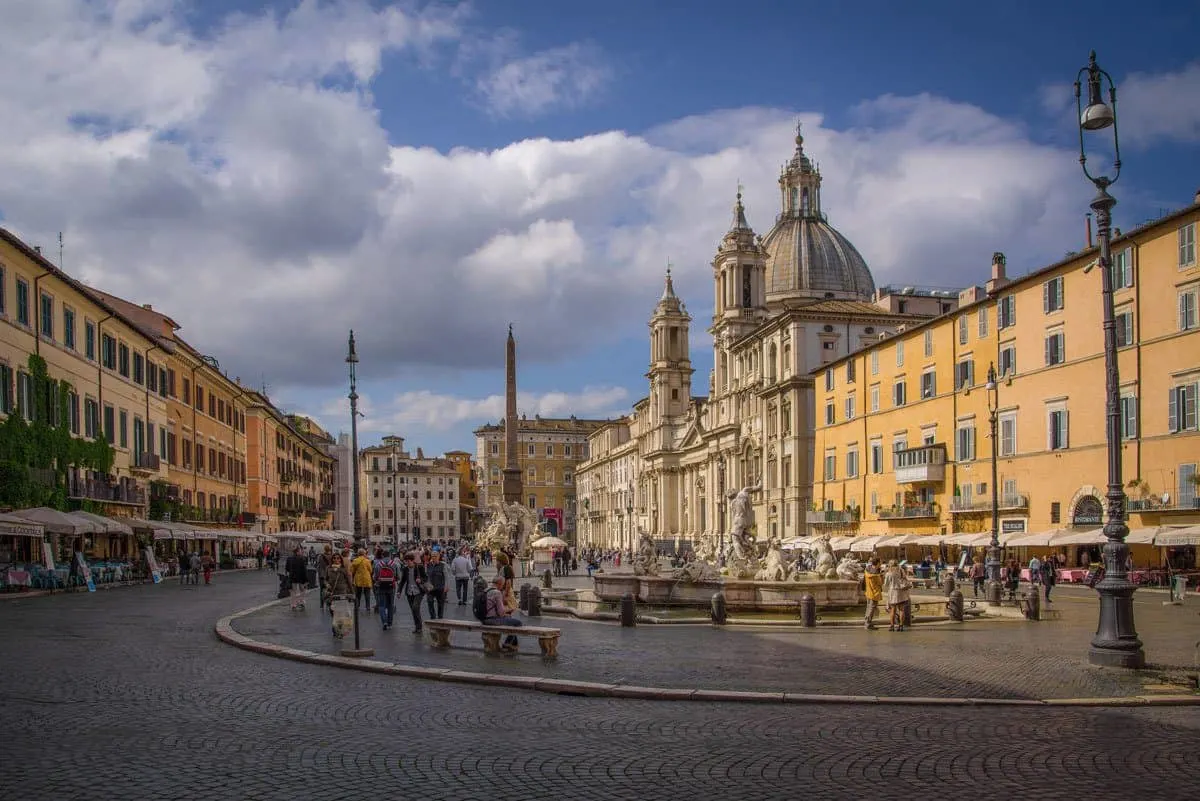
The Pantheon
A quick 5-minute walk from Piazza Navona is one of Rome’s best-preserved monuments. Over 2,000 years old, The Pantheon, originally a Roman temple to all gods and then a Roman church, has the world’s largest unsupported and unreinforced concrete dome.
To this day, it is considered an incredible architectural achievement. Perhaps this is what prompted Michelangelo to question if the Pantheon was the work of angels or humans.
The exact age of the Pantheon is still unknown, although legend states it is built on the site where Romulus, the mythological founder of Rome, ascended to heaven.
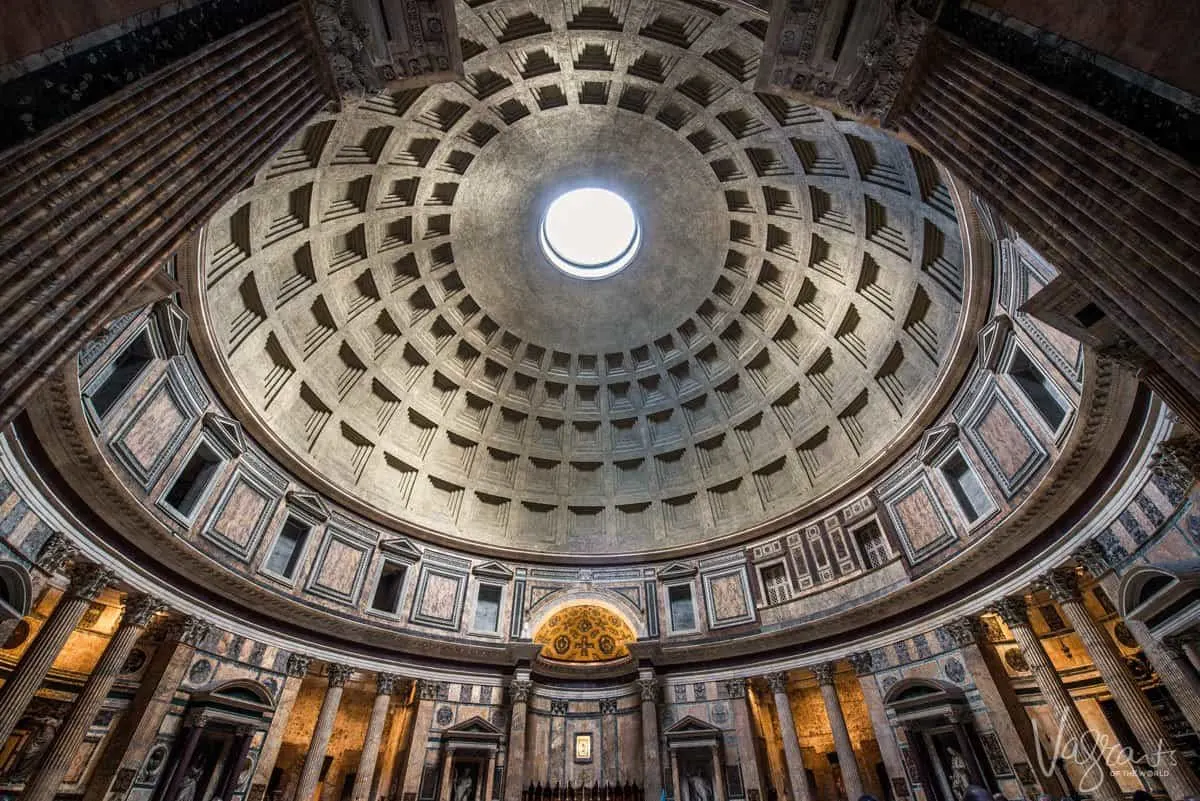
The Pantheon Opening Hours
- Monday–Saturday: 8:30 AM–7:30 PM (last admission 7:15 pm)
- Sunday: 9 AM–6 PM. (last admission 5:45 pm)
- Public holidays: 9 AM–1 PM. (last admission 12:45 pm)
Closed: 1st January | 1st May |25th December
Visits are not allowed during masses
Note: Entry to the Pantheon is always free
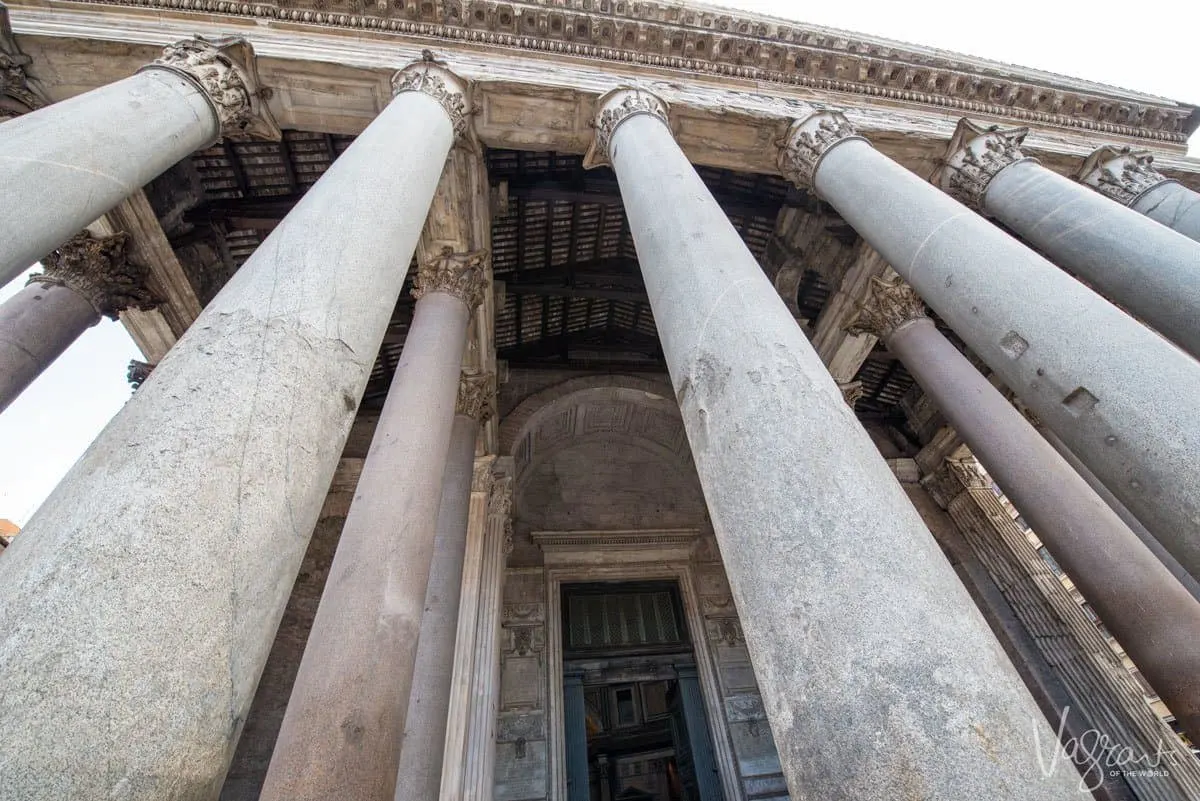
Trevi Fountain
Regardless of the crowds, Bernini’s Trevi Fountain is an icon of Rome and shouldn’t be missed.
We recommend visiting the fountain twice during your stay in Rome. Once in the daytime, to appreciate the magnitude of the crowds the famous Rome attraction draws. Then, visit again later in the evening when the crowds have thinned and the lights give the fountain an entirely different beauty.
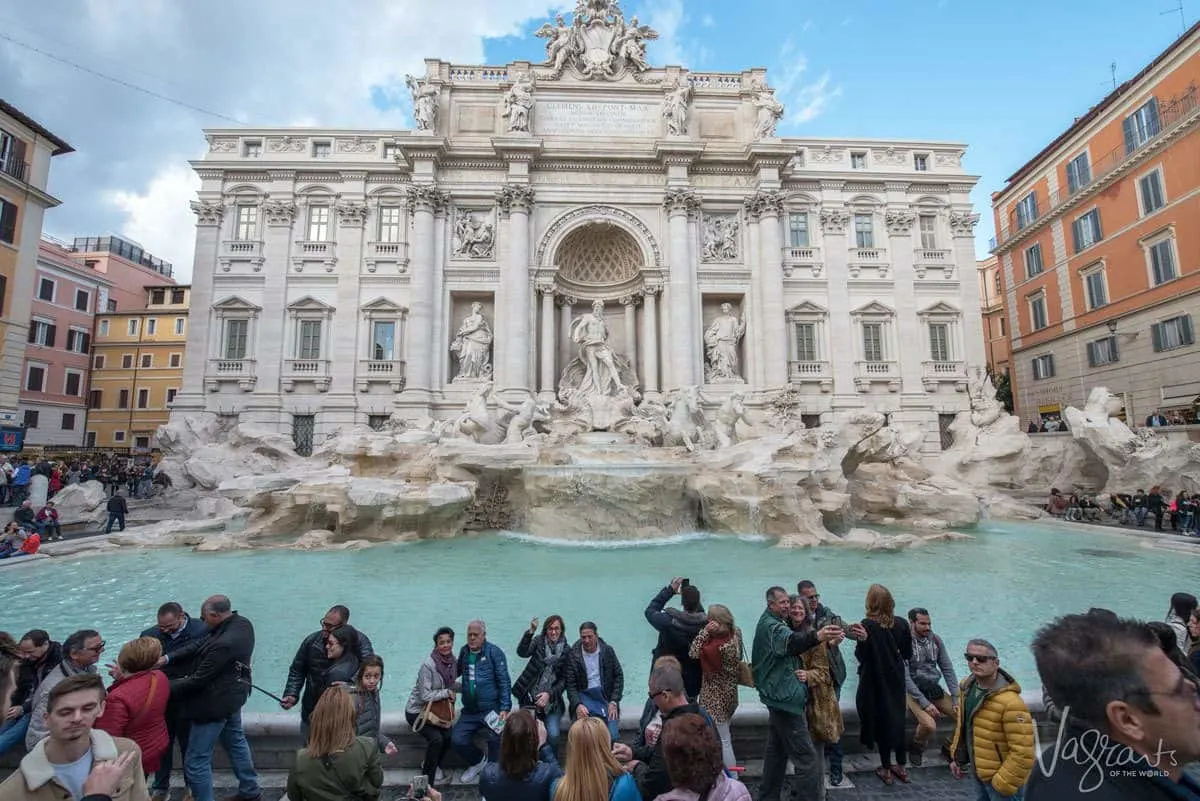
As cliche as it might be, don’t forget to throw a coin in the fountain. Legend says it guarantees you will return to Rome. Romance will cost you two coins and the promise of marriage- three.
While the Trevi Fountain may be one of Rome’s most famous, there are loads of beautiful and historic fountains in Rome. Discover more of Rome’s famous fountains here.
An estimated €3,000 euros are thrown into the Trevi fountain each day (estimated €1.4 million per year). The money is collected three times a week when the fountain is closed to the public – Monday, Wednesday and Friday from 8 AM–9 AM and the funds are distributed to charities to support Rome’s homeless and in need.
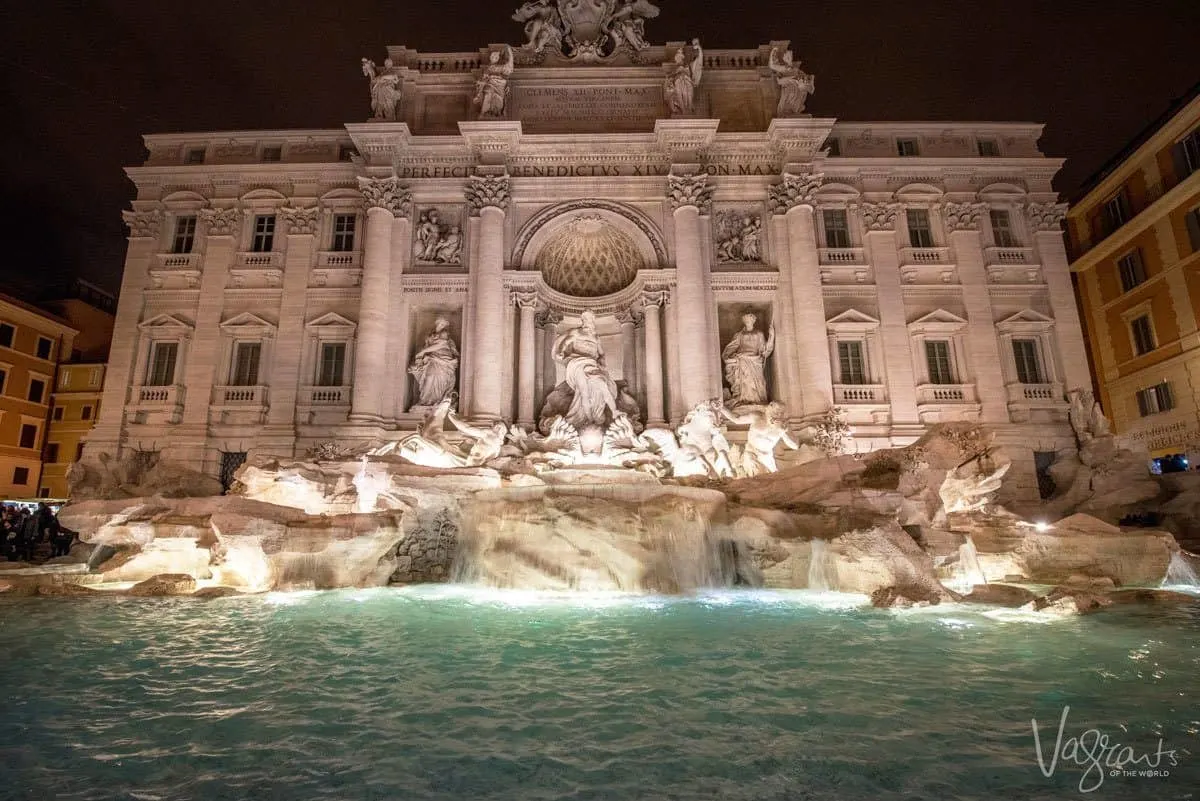
Piazza di Spagna and The Spanish Steps
A crowd is always gathered at the base of Rome’s Spanish Steps. Part of Piazza di Spagna (Spanish Square), the Spanish Steps are one of Rome’s most popular meeting places.
Built in 1725 as a symbol of the newfound peace between France and Spain, the steps join the Trinità de’ Monti Church at the top of the hill with the Piazza di Spagna below.
Cemented in popular culture with the 1953 film Roman Holiday featuring Audrey Hepburn and Gregory Peck, the steps are considered one of Europe’s most enchanting and renowned staircases.
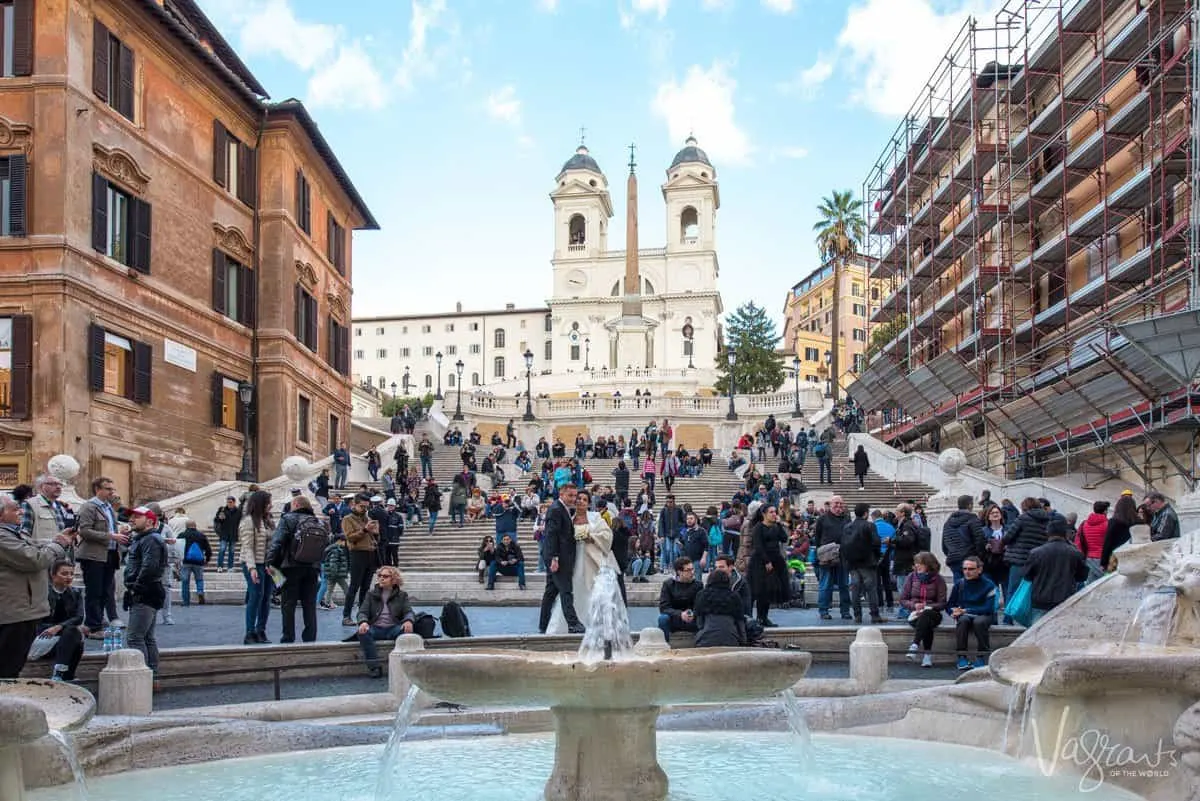
With the baroque Fontana della Barcaccia in the center of the piazza, the iconic steps attract locals and tourists from all over the world. It is also a popular spot for wedding photographs despite the crowds. Climb to the top for iconic views of Rome.
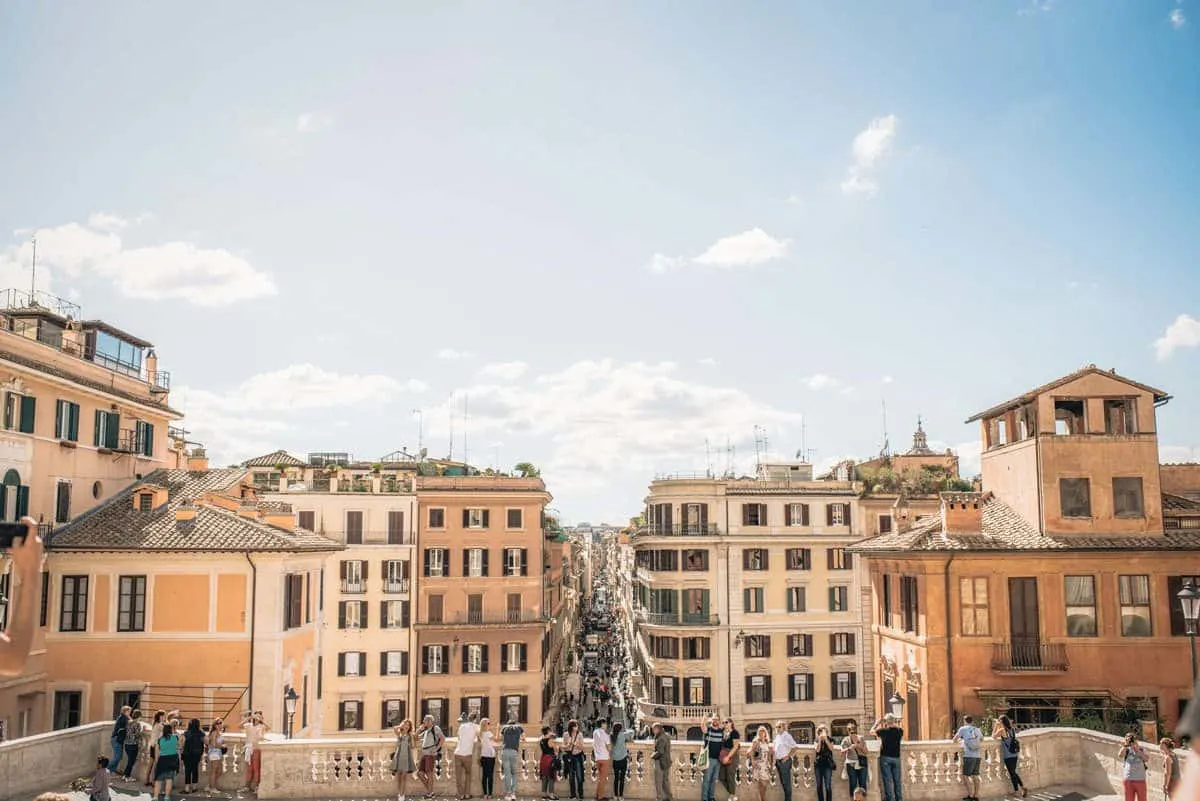
Villa Borghese and Borghese Gardens
Villa Borghese lets art lovers indulge in Roman art without the maddening crowds. The 22 rooms of The Galleria Borghese, once the private residence of the powerful Borghese family, features one of the world’s most significant private art collections.
Collected by Cardinal Scipione Borghese in the 17th century, Galleria Borghese is bursting with Renaissance and Baroque masterpieces by Bernini, Titian, Raphael, Caravaggio, and Rubens.
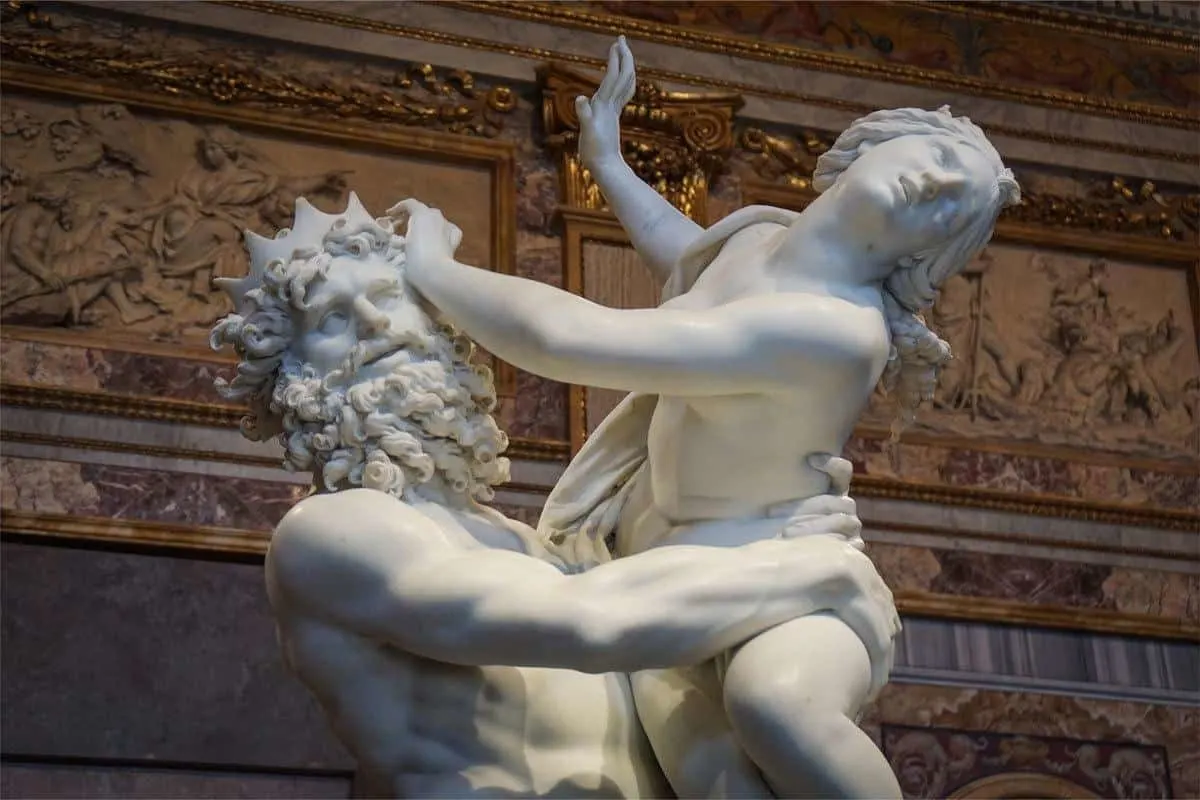
Tickets for Galleria Borghese
- Visitor numbers to the gallery are strictly limited and managed by pre-sale time scheduled tickets.
- It is recommended to book at least one month in advance to secure a time slot.
- Visit the official Borghese Gallery website for opening times and information.
Tips for Visiting Galleria Borghese
Although compact, the gallery is quite overwhelming. Take a guided tour to make the most of your visit and ensure you don’t miss any of the most important pieces. You can find an assortment of skip the line guided tours of Villa Borghese here.
Cameras and bags are not permitted inside the Borghese Gallery. All bags must be checked at the entry.
Allow at least 2 hours to visit the gallery.
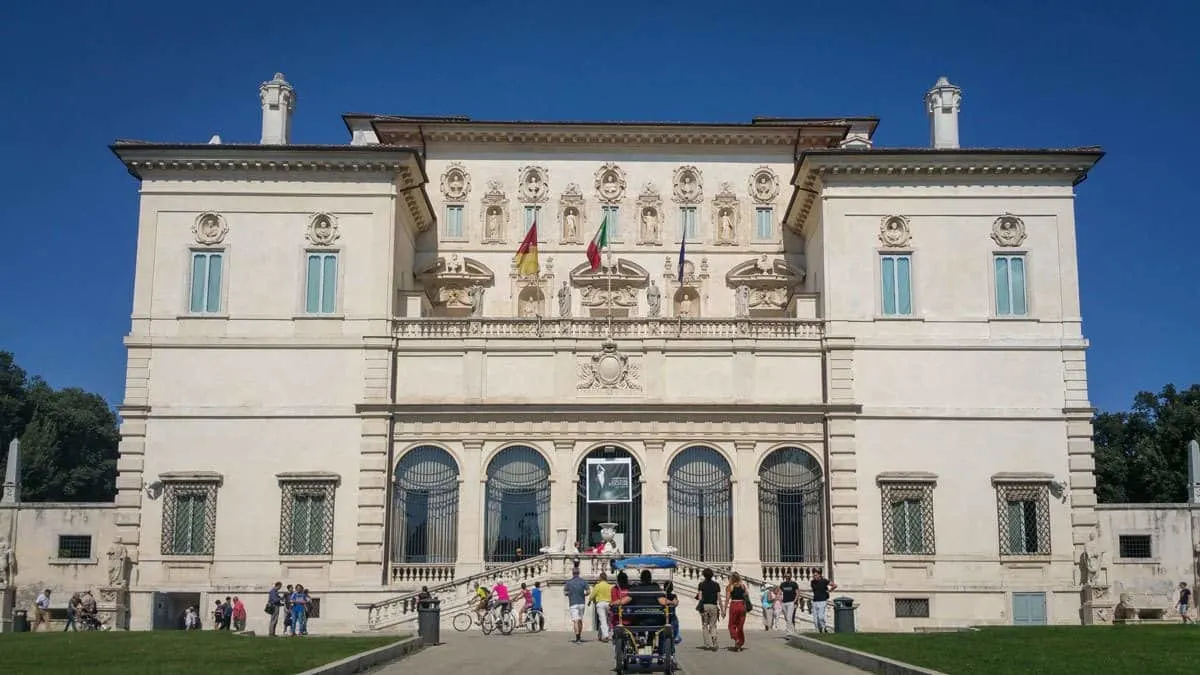
Borghese Gardens
After the gallery, explore Rome’s most famous park – The Villa Borghese Gardens.
Considered the green lung of Rome, the 80 hectares of gardens were built in 1606 by Cardinal Borghese to transform his vineyard into the most extensive gardens in Rome. The gardens were redesigned entirely and became a public park in 1903.
The park is open every day from dawn to dusk. Entry to the gardens is free.
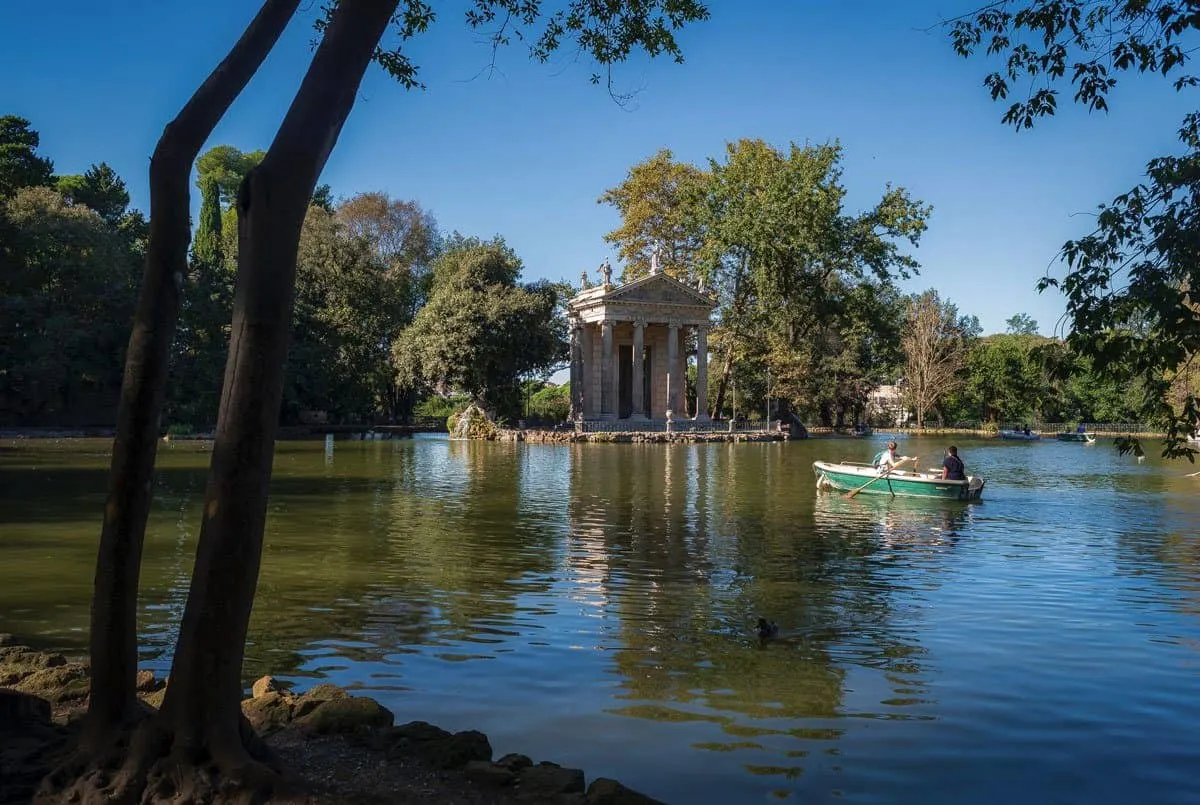
Day 3 Vatican City and Trastevere
On the last day of your 3 days in Rome itinerary, we’re heading to the smallest country in the world – Vatican City. See our guide to the best Vatican tours and tips for visiting to plan your day.
- Vatican Museums
- Sistine Chapel
- St Peter’s Basilica
- Castel Sant’Angelo
- Trastevere
Vatican City
The smallest country in the world but one of Rome’s biggest attractions. The main attractions in Vatican City are:
- The Vatican Museums
- The Vatican Gardens
- The Sistine Chapel (part of the Vatican Museums)
- St. Peter’s Basilica
Many people plan to visit Vatican City to see all the main attractions in one day, which makes good sense.
Vatican Dress Code
Men and women require modest dress when visiting the Vatican, including the museums. Low-cut or sleeveless clothing, shorts, short skirts, and hats are not allowed. Entry is denied to those not dressed appropriately.
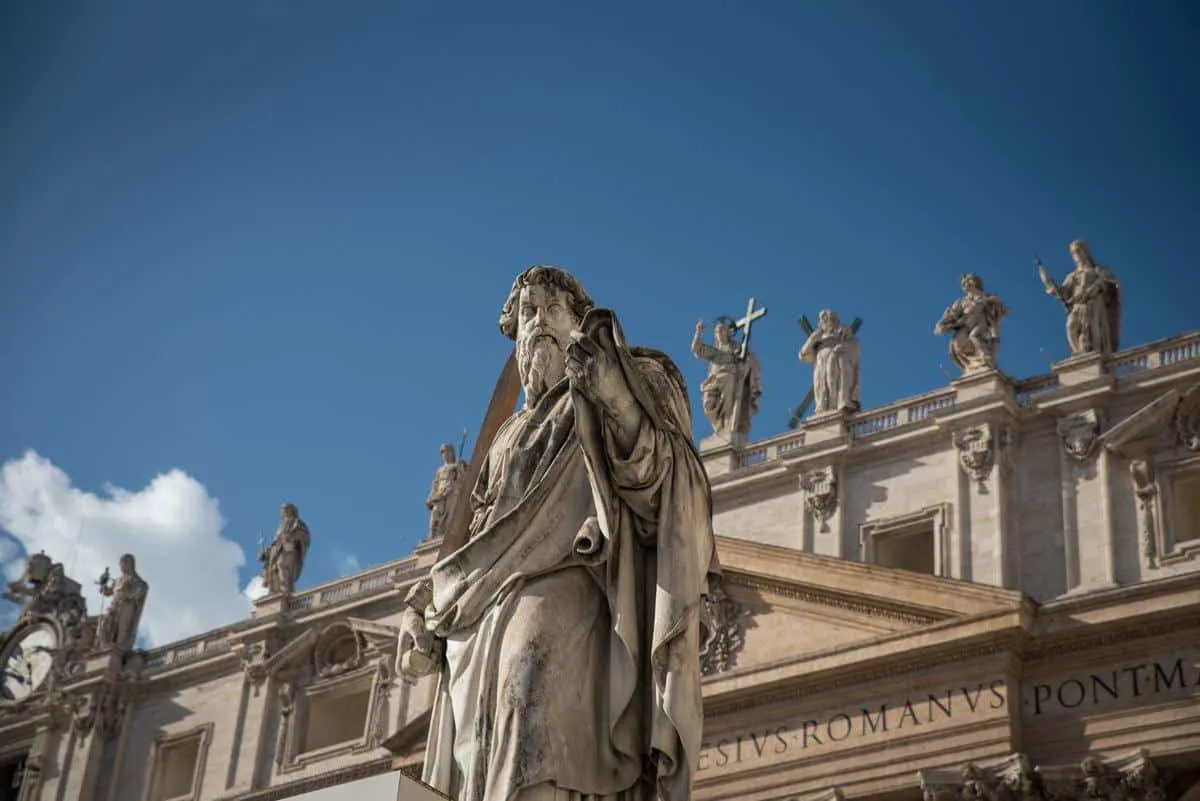
Vatican Museums and Sistine Chapel
Visiting The Vatican Museums
The Vatican Museums house one of the most impressive art collections in the world. A collection of almost 20,000 pieces covering a space nearly 15 km long (9 miles).
With this in mind, allow at least 2 hours to visit the Vatican Museums and Sistine Chapel.
A trip to the Vatican will always involve long queues, so it is advisable to arrive before opening hours, even with a skip the line ticket.
Start your day at the Museums. Early in the morning, you can enjoy the museums leisurely and in relative peace.
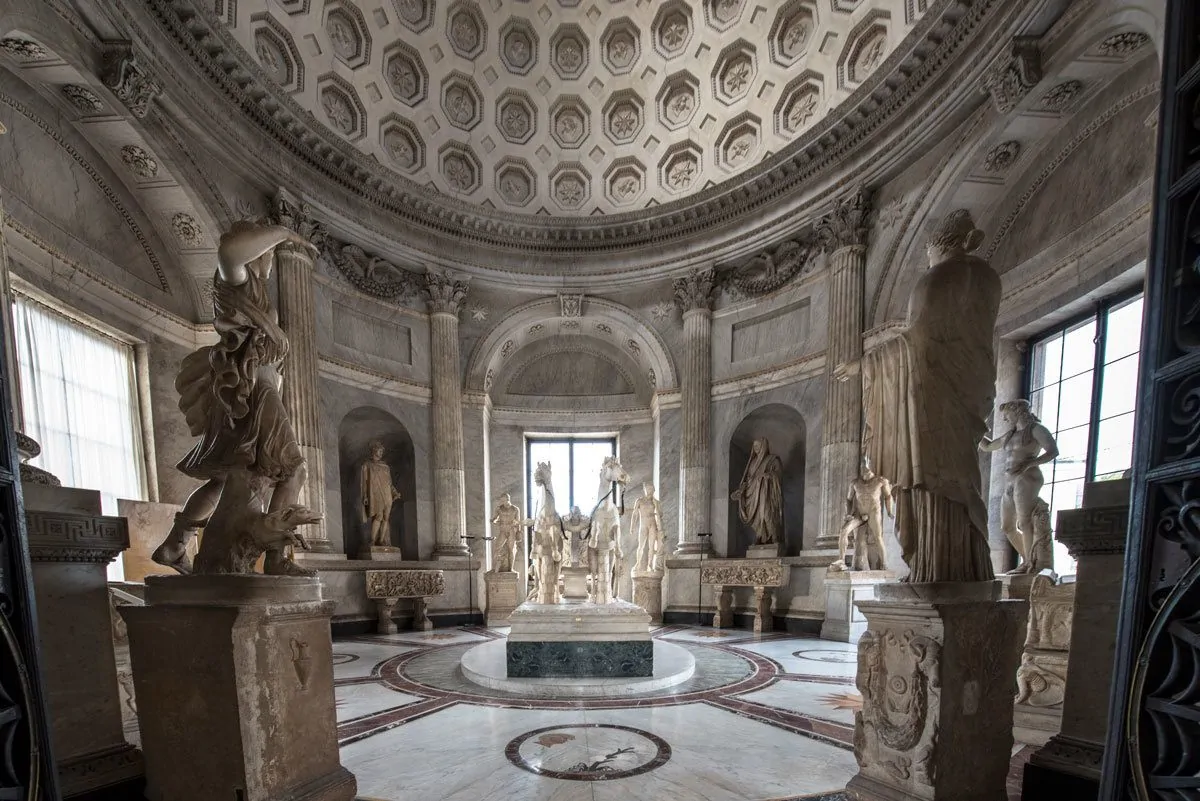
Opening Hours of the Vatican Museums
The museums open at 9 AM every day except Sunday. Closing times vary. See here for the Vatican Museum calendar.
Tickets for the Vatican Museums
Full tickets for the open (self-guided) tour of the Museums and Sistine Chapel must be reserved in advance. Tickets are only bookable up to two months in advance and are often sold out. See here for skip-the-line reservations.
Vatican Tours
There are many Vatican tours to choose from if you don’t want to self-guide or wish to add additional attractions to your visit.
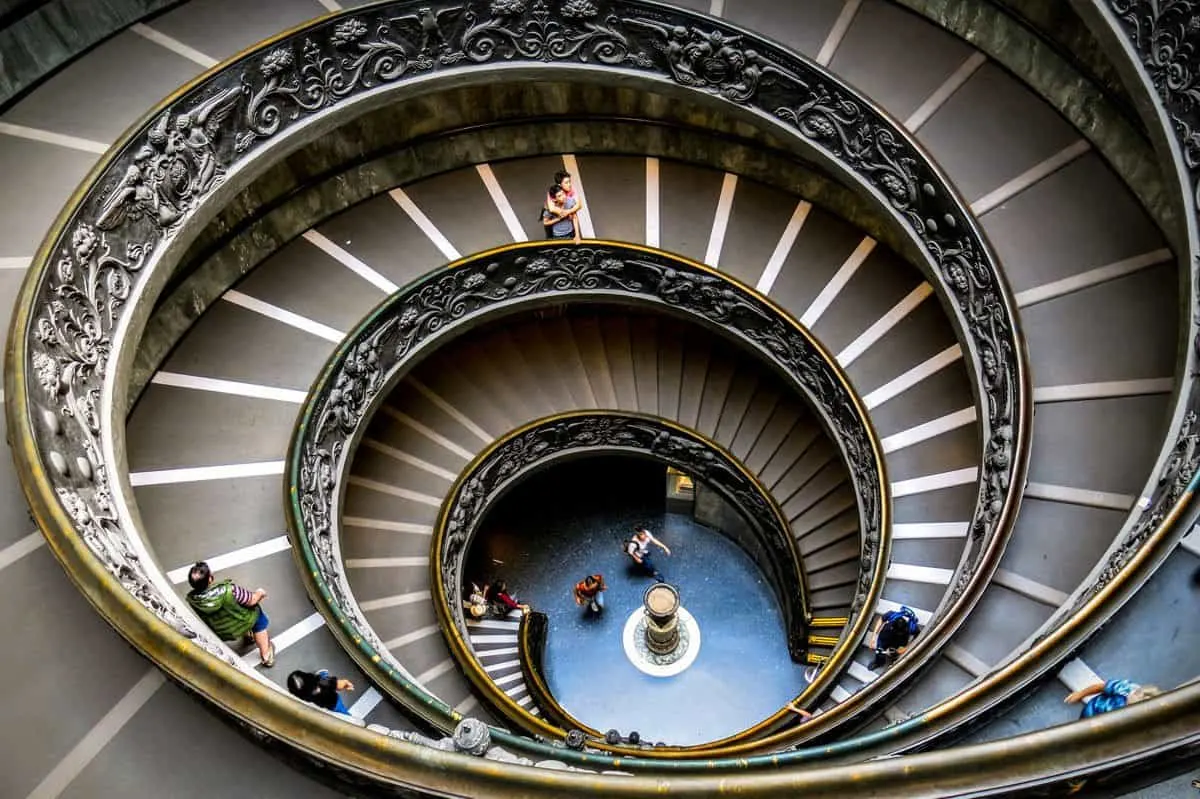
Sistine Chapel
All tickets to the Vatican Museums include access to the Sistine Chapel.
Located in the Apostolic Palace, the official residence of the Pope, the Sistine Chapel is typically the last room you visit on a Vatican Museums tour.
If self-guiding, this is another reason to arrive early at the Museums. You can tailor your visit to have a greater chance of being one of only a few in the chapel.
Considered Michelangelo’s most beautiful work, The Sistine Chapel is a highlight of the Vatican.
Photographs are not allowed in the Sistine Chapel, you may not use your phone, and you are requested to remain quiet while inside.
After the Vatican Museums and the Sistine Chapel, you can visit St. Peter’s Basilica.
Optional additional tour – You can visit the Vatican Gardens.
Further on, we give you an alternative 4 day Rome itinerary by adding to your Vatican visit.
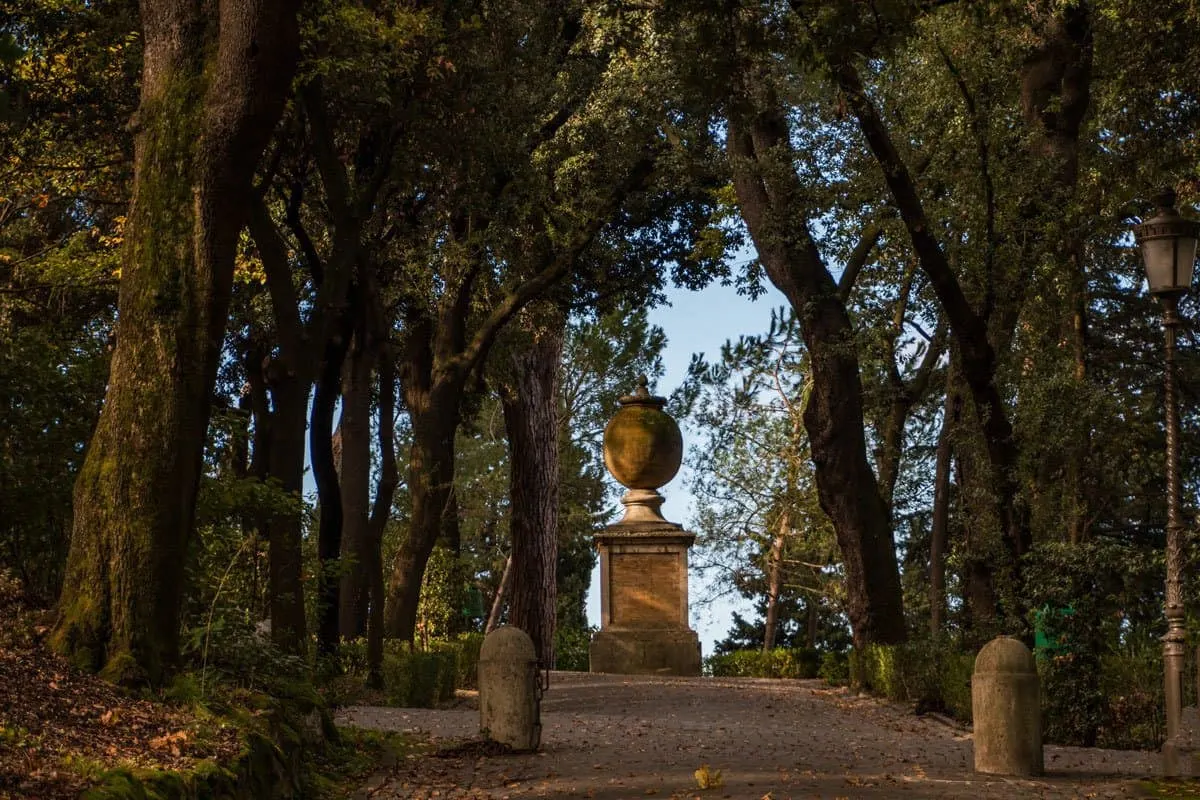
St Peter’s Basilica
Entry to St Peter’s Basilica is free. However, queues at the entrance can be quite long, and security slow. If you book a combo Vatican Museums and St Peters Basilica guided tour, you can access St Peter’s Basilica via a backdoor entrance, avoiding the crowds.
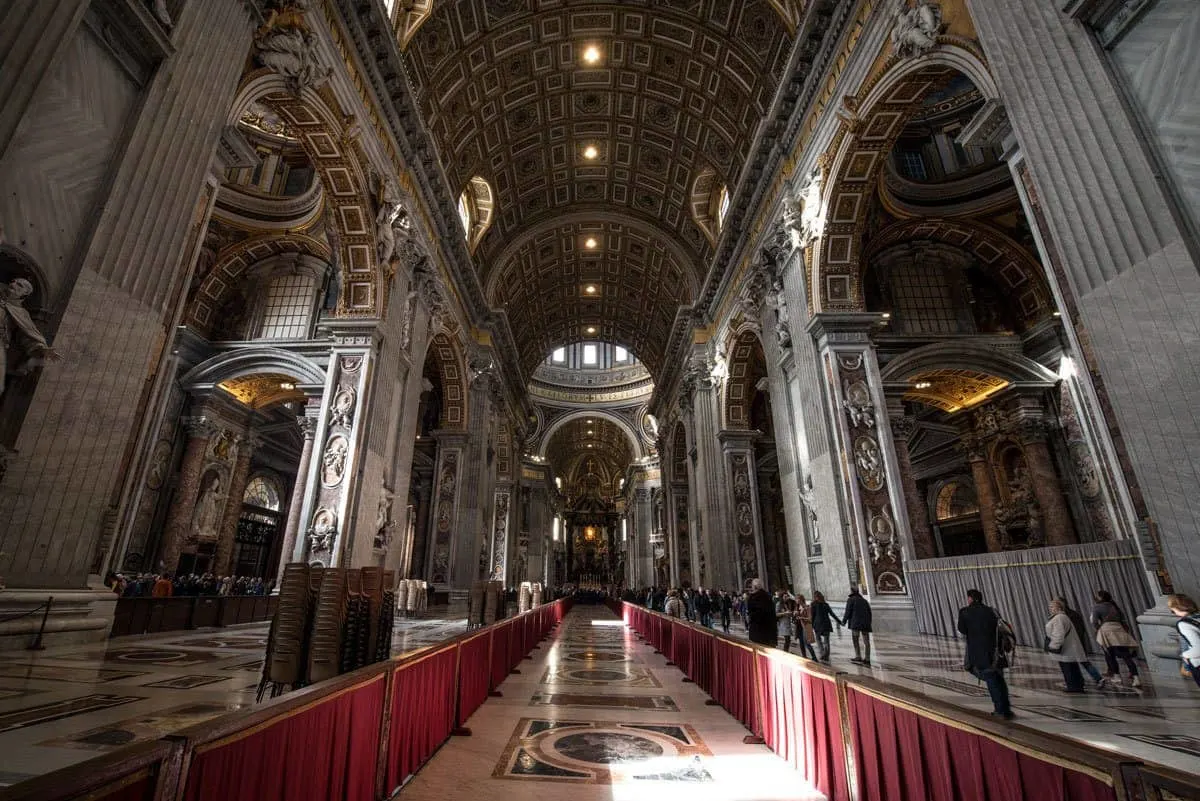
The biggest Catholic church in the world, St Peter’s Basilica, situated on Vatican Hill, dominates Rome’s skyline. The creation of Michelangelo, Donato Bramante, Carlo Maderno, and Gian Lorenzo Bernini, St Peter’s Basilica has a capacity of over 60,000 people and covers 22,300 square meters.
Below St Peter’s Basilica are two levels. The first is the Vatican Grottoes, a large underground graveyard where 91 Popes are buried. The second level, The Vatican Necropolis, houses the tomb of St Peter.
Opening Hours of St Peter’s Basilica
Everyday 7 AM – 6:30 PM (7 AM – 7 PM in winter)
On Wednesdays, if there is a Papal audience, the Basilica remains closed until noon.
Entrance: Free
Climb the Basilica Dome
After visiting the Basilica, you can climb the 231 steps (or take the elevator) to visit the dome of St Peters Basilica, which gives you an up close look at the beautiful mosaics inside the dome.
From the dome, you can choose to take the additional 320 stairs (there is no elevator) to the roof for some of the most spectacular views of Vatican City and Rome.
Basilica Dome Opening Hours:
The dome opens at 8 AM and closes one hour before the Basilica closes.
Climbing the Dome:
There is an additional fee to visit the dome – you can take the lift to the terrace plus 320 steps or climb the 551 steps by foot.
A combined St. Peter’s Basilica, Dome Climb, and Underground Tour ticket gives you access to all the main highlights of the basilica.
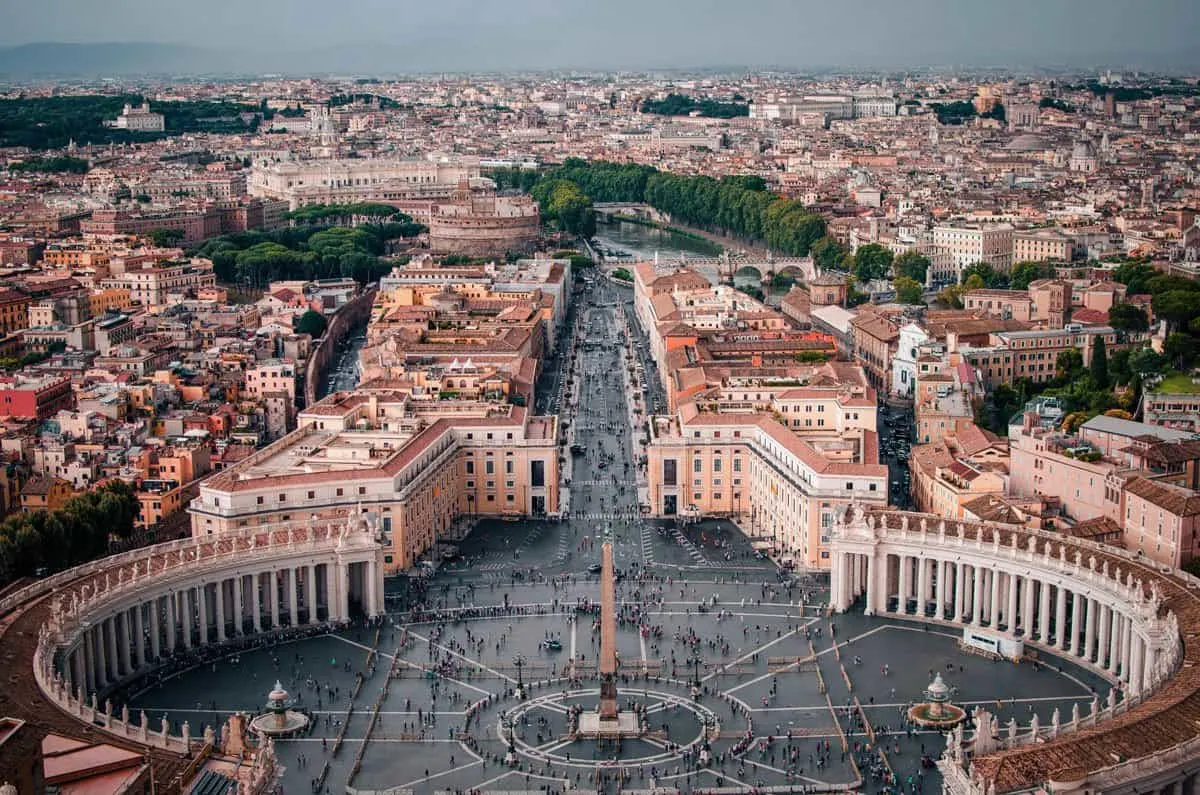
See the Pope in Rome
If you want to see the Pope when you are in Rome, it is not as difficult as you might think. Tickets for the Papal Audience or Papal Mass are always free and relatively easy to get. Tickets are not required for Sunday Angelus. In all cases, expect crazy queues on a first-arrived, first-in basis. Even those with tickets are not guaranteed entry once capacity is reached.
- The General Audience is held on Wednesdays when Pope Francis is in Rome. Starting at around 10 AM and lasting for 1–1.5 hrs. You will need a ticket for this.
- Sunday Angelus is held every Sunday at 12 PM in St Peters Square. No ticket is required. The Pope will give a short speech followed by a blessing. This will last around 20 mins.
- Papal Masses are held regularly and may be held in different churches around Rome, not just St Peters. You will need a ticket, but these are free.
- Getting tickets for special Holiday Masses such as Christmas and Easter may be difficult.
Check the Vatican website for the Pope’s public schedule to ensure he is in Rome. | Check the Prefecture of the Papal Household website for information on tickets.
Castel Sant’Angelo
After St Peters Basilica, stroll over to Castel Sant’Angelo on the banks of the River Tiber. Also known as Hadrian’s Tomb, it is one of the oldest buildings in Rome.
In over 2,000 years, the emperor’s tomb has served as a castle, a fortress, a prison, and a museum. Explore the mausoleum and the prison and enjoy spectacular views from the upper terrace.
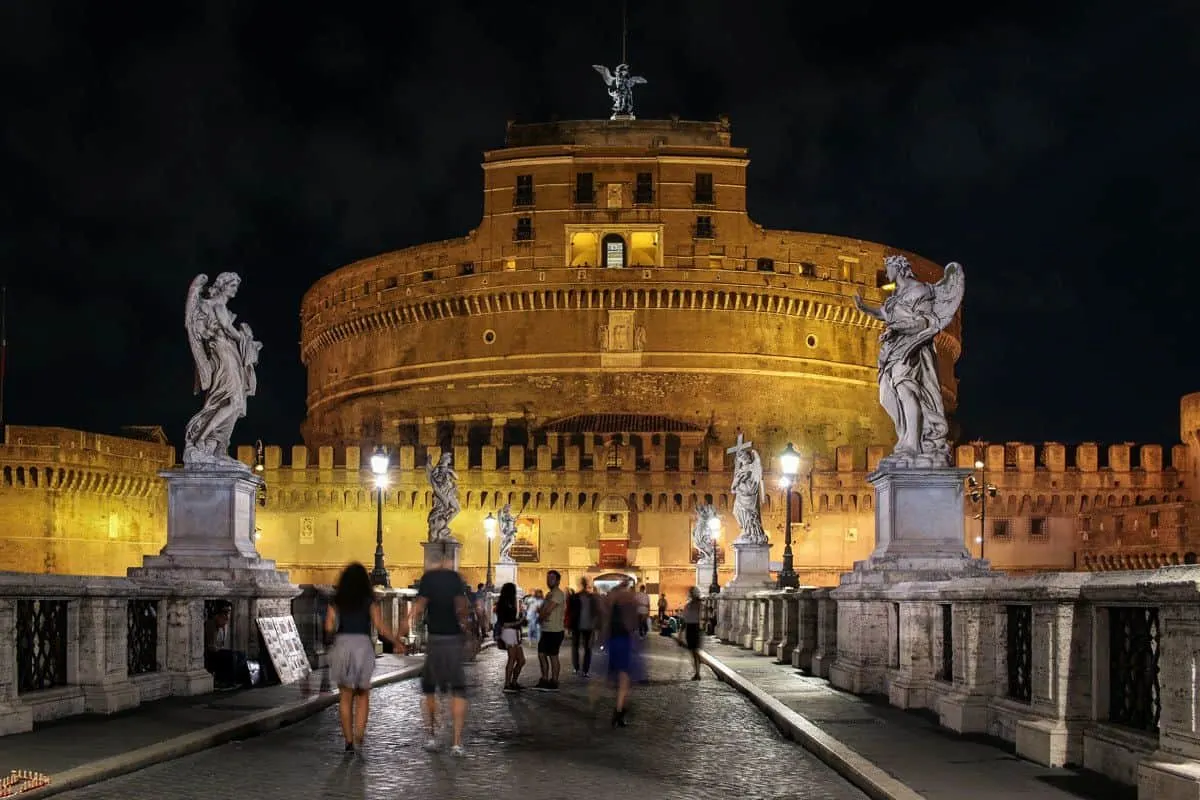
Trastevere
From Castel Sant’Angelo, take the 15-minute stroll along the River Tiber, and you’ll reach Rome’s favorite local hub, Trastevere.
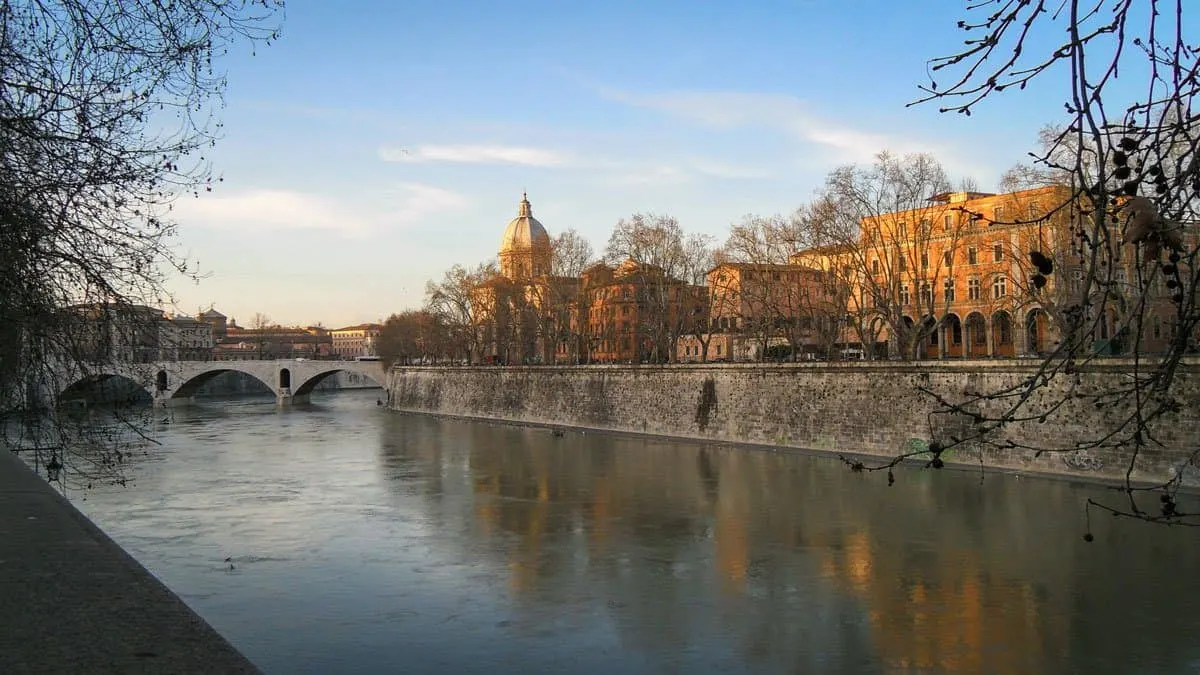
Trastevere is a vibrant neighborhood with working-class roots on the western banks of the River Tiber. An area considered slightly bohemian, known for its traditional and innovative trattorias, craft beer pubs, and artisan shops.
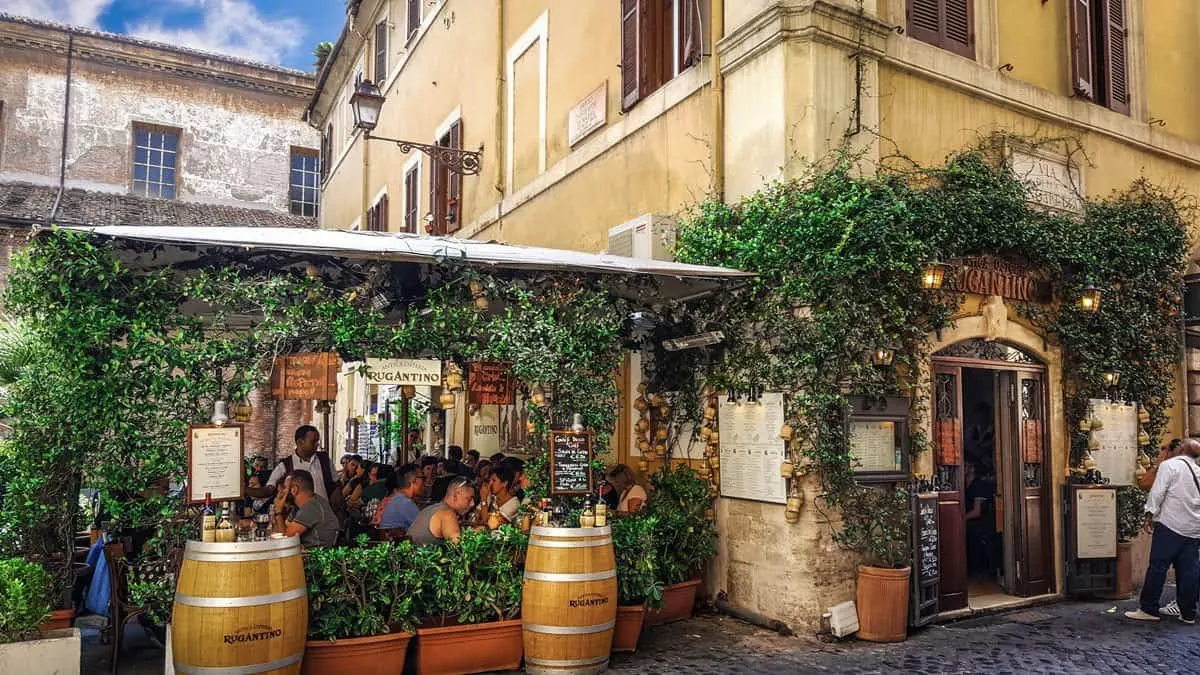
The perfect neighborhood to slip from afternoon to evening. Get lost exploring the tiny, colorful cobblestone lanes in the afternoon.
Join the pre-dinner promenade around Piazza di San Calisto and Piazza Santa Maria. Then, pop into a local trattoria for a drink and dinner and watch as the neighborhood comes alive.
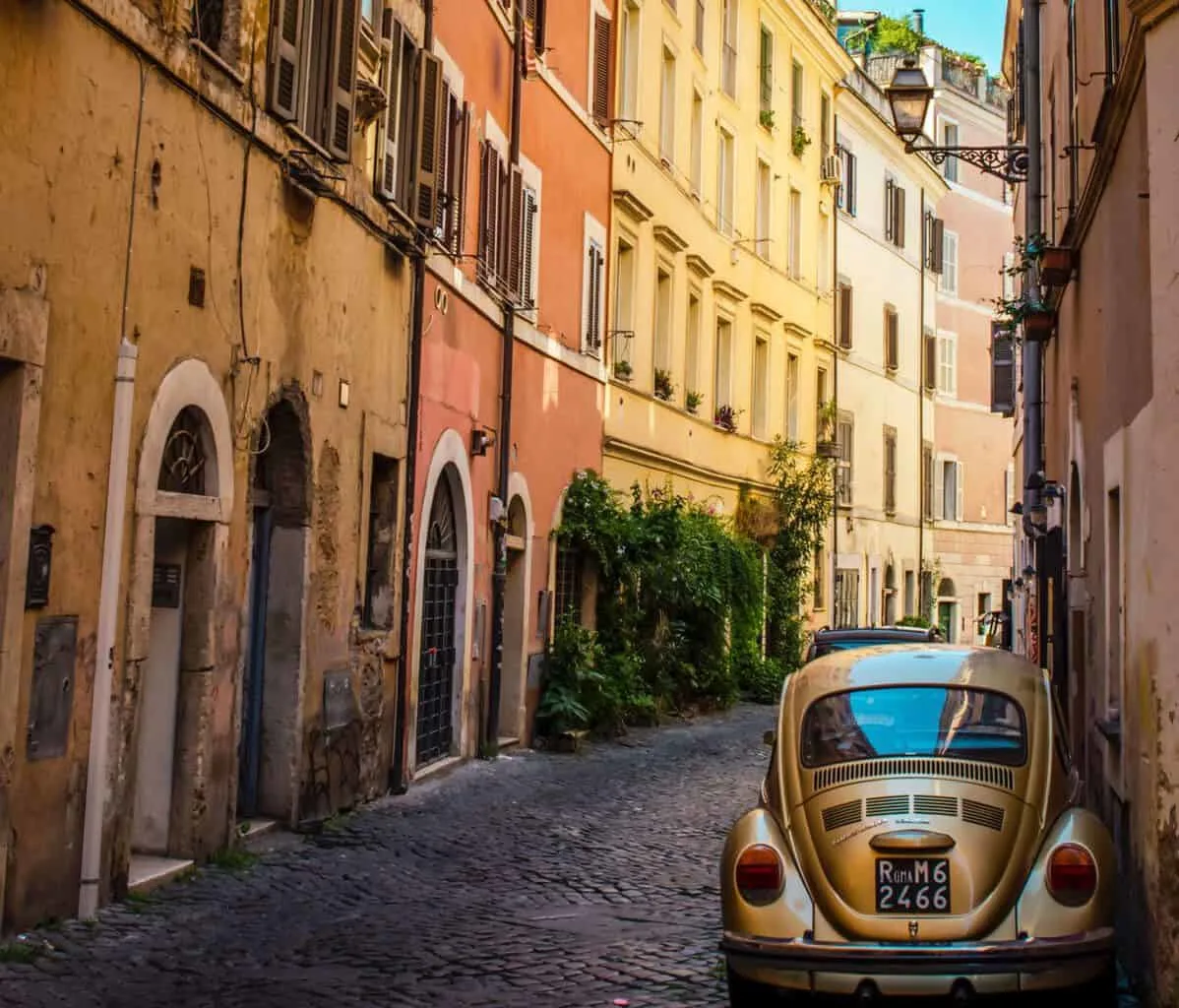
Optional 4th Day Vatican Over 2 Days
If you have the time, you can extend your 3-day itinerary and spend four days in Rome by splitting the Vatican City into two days, including a charming day trip from Rome.
- Vatican Museums
- Sistine Chapel
- Villas of Castel Gandolfo
- Barberini Garden
If visiting Rome over a weekend, we recommend planning your visit to Vatican City over two days for the best experience and include the Vatican Gardens and the Villas of Castel Gandolfo – the Apostolic Palace 24 km from Rome.
Vatican City Day 1
- Arrive at St Peter’s Basilica early to avoid the crowds (it opens at 7 AM).
- Spend the morning exploring the Basilica.
- After St Peter’s Basilica visit Castel Sant’Angelo.
- Leave Castel Sant’Angelo and explore the Trastevere neighborhood.
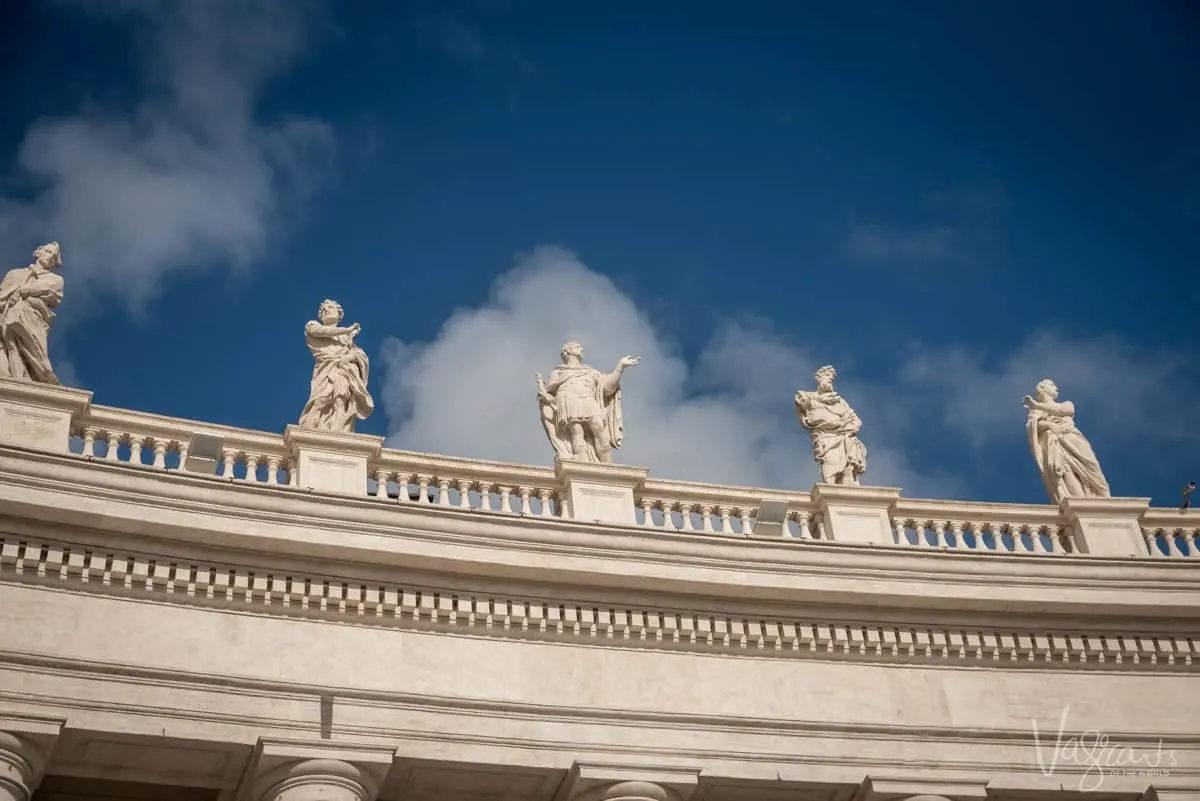
Vatican City Day 2 Including a Trip to Castel Gandolfo
The Vatican Full Day by Train Tour has remained a highlight of Rome for us. Included are a visit to the Vatican Museum, and Sistine Chapel, a tour of the Vatican Gardens, and the Villas of Castel Gandolfo, 24 km from Rome.
Every Saturday from spring through to late October, a modern electric train connects Vatican City station with the Pontifical Villas in the city of Castel Gandolfo.
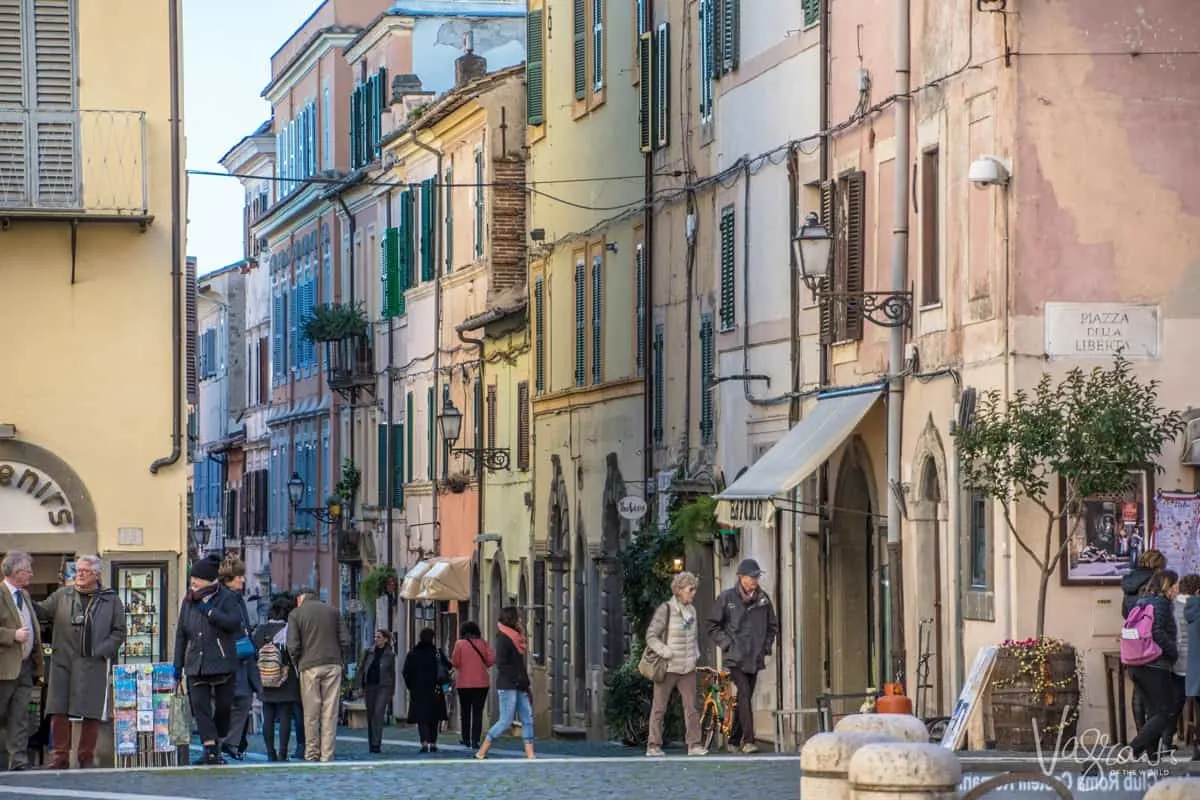
The Vatican Full-Day by Train Tour includes –
- Special skip the line entry and open visit to the Vatican Museums and Sistine Chapel with a special multilingual audioguide.
- A guided walking tour through the Vatican Gardens to the Vatican railway station.
- Return transfers by special train to Castel Gandolfo.
- Return shuttle bus transfers from Castel Gandolfo station to the Pontifical Villas.
- Entry (with audio guide) to the Papal Palace of Castel Gandolfo – Museum and papal apartment.
- A guided tour of the Barberini Garden (Pontifical Villa Barberini) by ecological vehicle.
- Time to explore the town of Castel Gandolfo.
The tour starts at 8 AM finishing at Roma San Pietro station just after 6 PM.
See here for full Vatican by Train tour details.
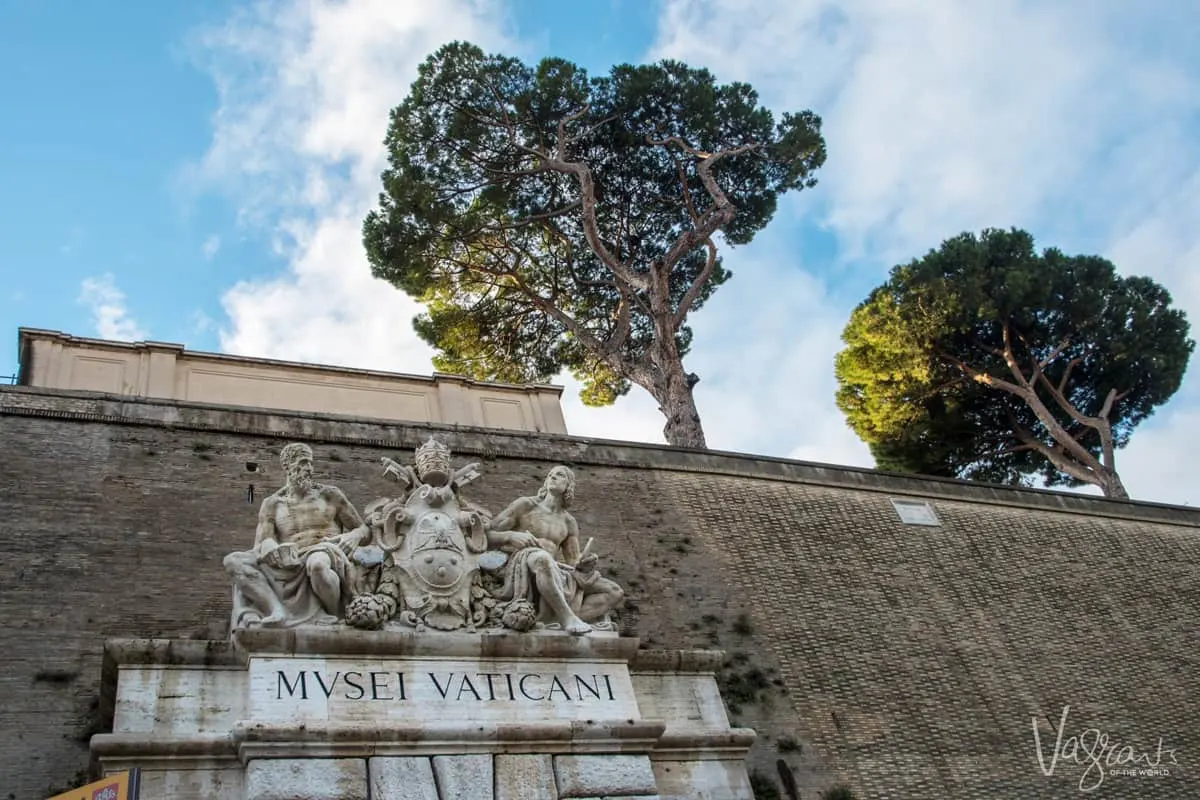
Villas of Castel Gandolfo
The Papal Palace of Castel Gandolfo, perched above Lake Albano, is a 17th-century 135-acre papal palace in the city of Castel Gandolfo, Italy.
Open to the public since 2014, it had served for centuries as the pope’s summer residence and vacation retreat.
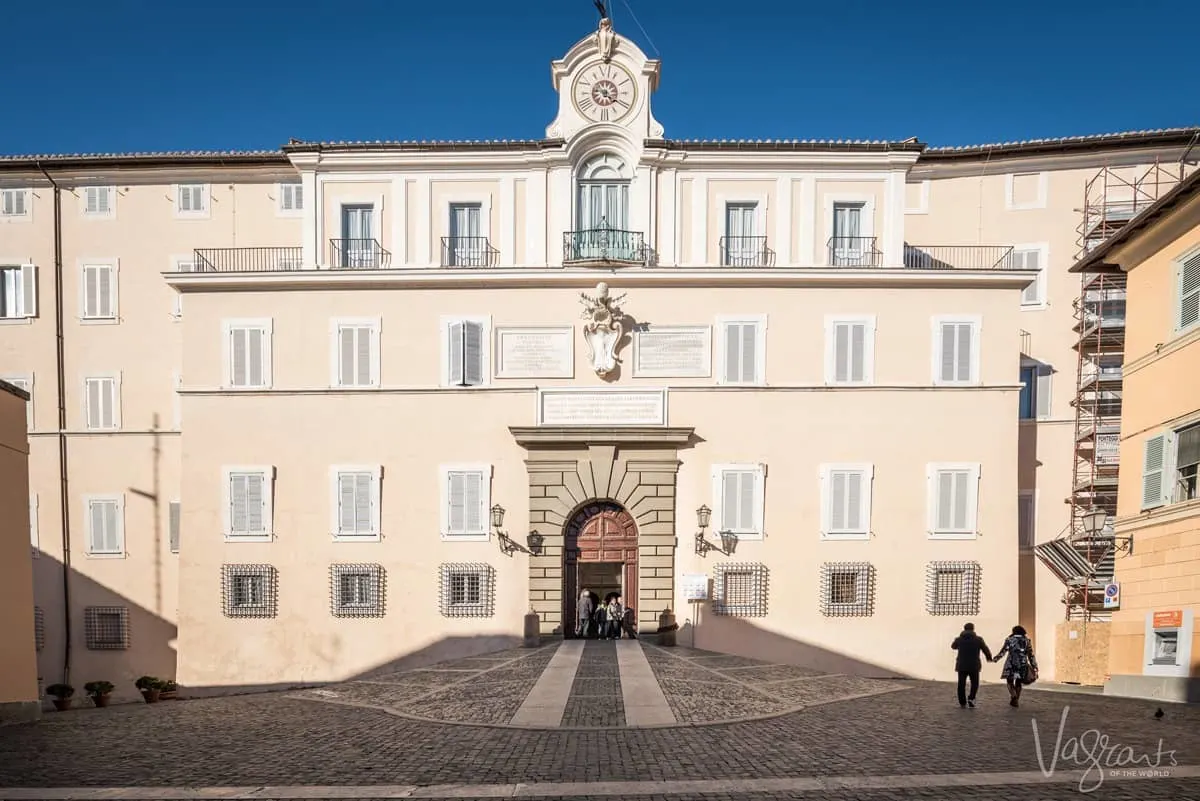
Over the centuries, each pope has left his mark on the papal palace or had his own affinity with it.
- As part of a massive refurbishment, Pope Pius XI added a farm in the 30s to supply the Vatican with fresh produce.
- John XXIII notoriously used to sneak out to mingle with locals in town.
- John Paul II loved the place so much, all up, he spent over five years of his 16-year papacy there, even building a swimming pool on the grounds.
- Benedict XVI retired there for months after resigning in 2013.
- Francis expressed no desire to indulge in the papal retreat and has only visited three times, never spending the night.
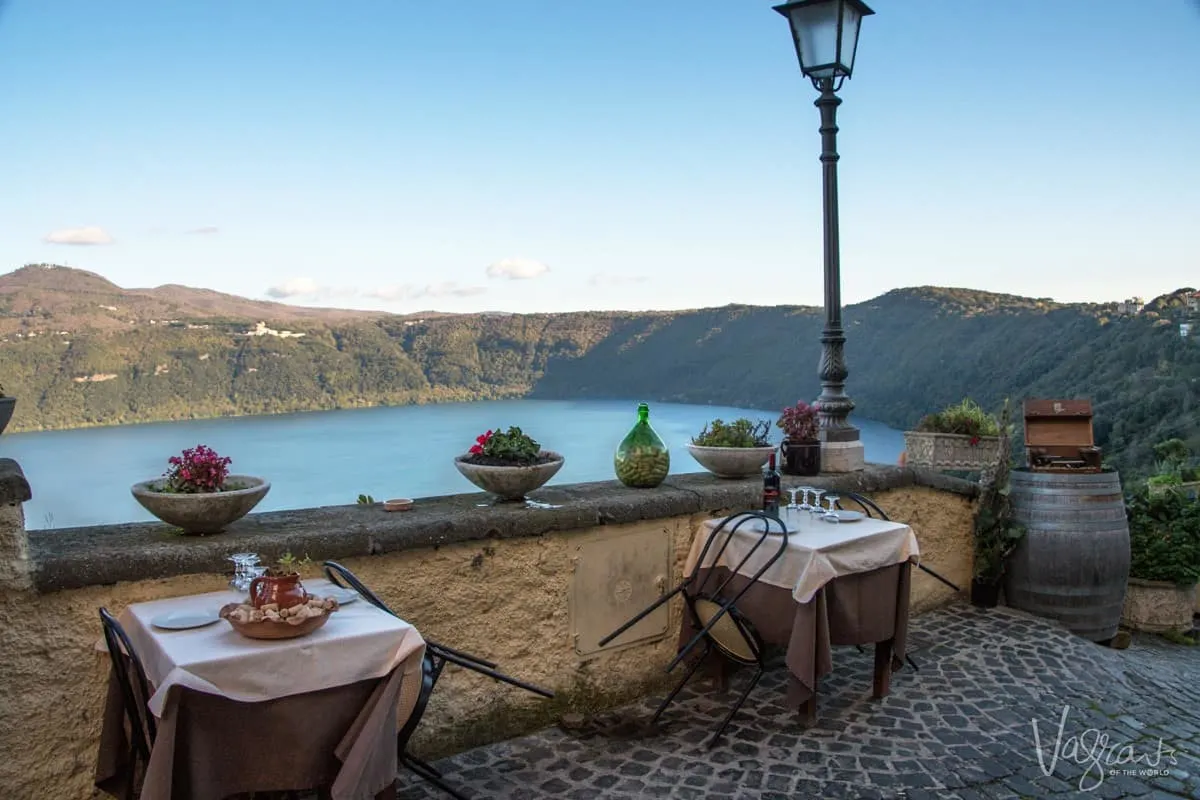
Besides the Papal Apartment, five hundred years of papal history are on display, including paintings, photographs, relics, liturgical vestments, and other curiosities. You can see the sedan chair of Pope Pius IX, Popemobiles over the ages, and even the BMW used by Pope Wojtyla during his summer stays.
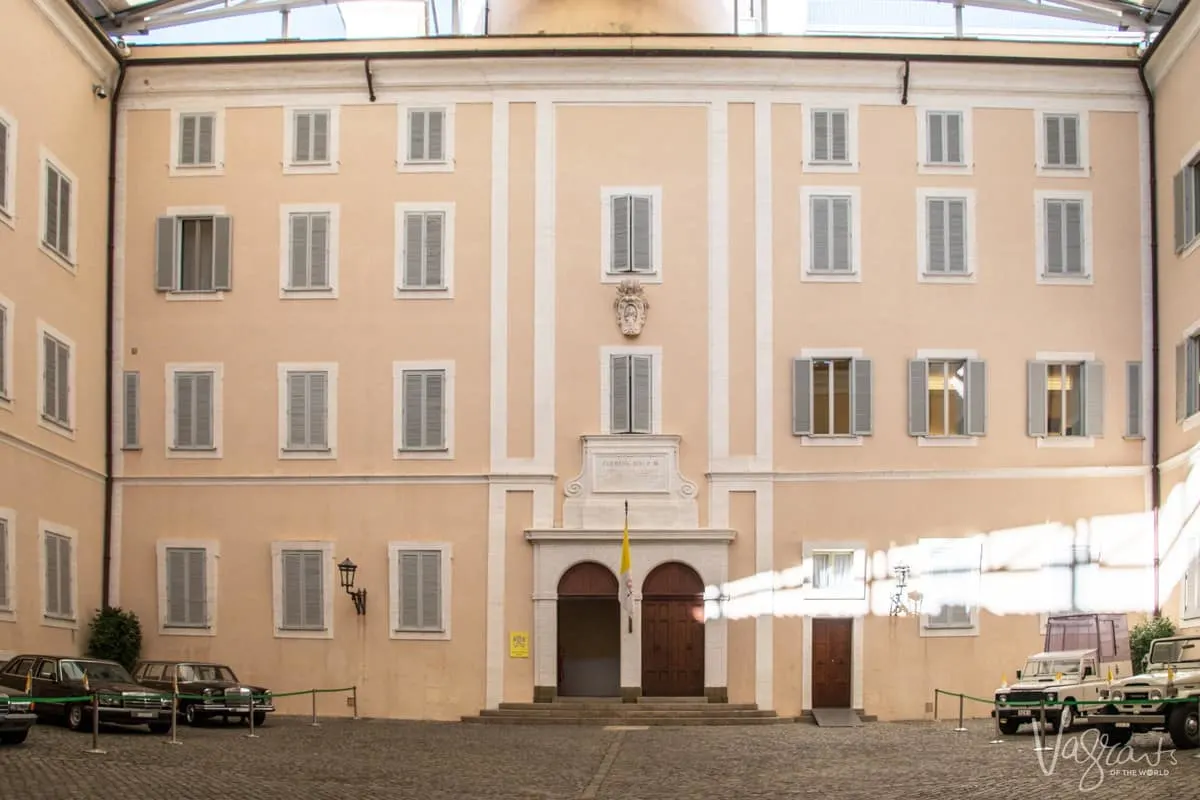
Opening Hours of the Apostolic Palace: If visiting outside of an official tour, opening hours vary for an individual visit. Check the official Vatican Calendar here for times.
Tickets for the Apostolic Palace: If visiting outside of a tour, it is advised to book well in advance. The entry includes a tour of the papal residence and gardens. See here for ticket details.
Giardini di Villa Barberini
For the first time, visitors can also visit the extraordinary grounds of the papal gardens – The Giardini di Villa Barberini section of the 55-hectare property.
Built into the first-century AD, ruins of Emperor Domitian’s country residence, artful flower displays, fruit and veg patches, and shady wooded oak parks set amongst Roman ruins will leave you spellbound with the beauty of Castel Gandolfo.
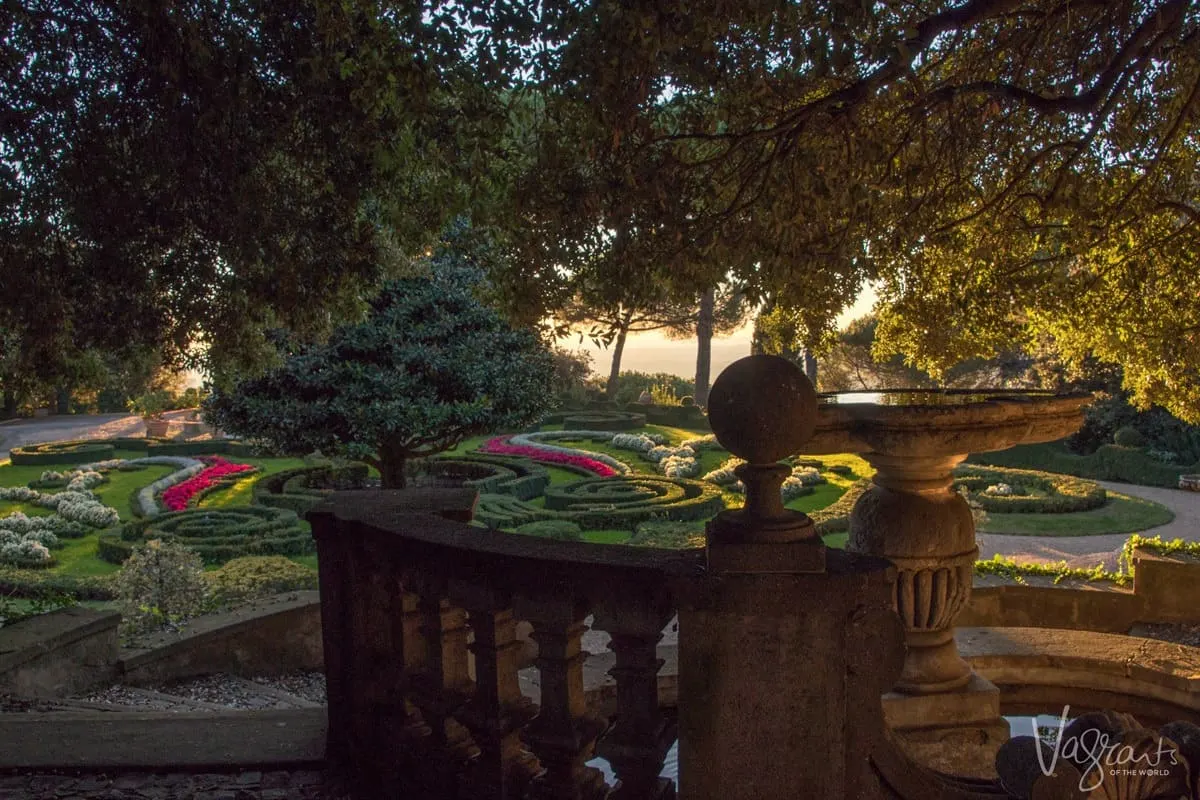
Visiting the Castel Gandolfo Gardens
Tours of the Giardini di Villa Barberini are part of a guided tour booked in advance. See here to book tickets.
How to get to the Castel Gandolfo Gardens Independently
If you wish to travel to Castel Gandolfo on your own, trains leave Rome Termini station for the village of Castel Gandolfo every hour. The journey takes 40 minutes.
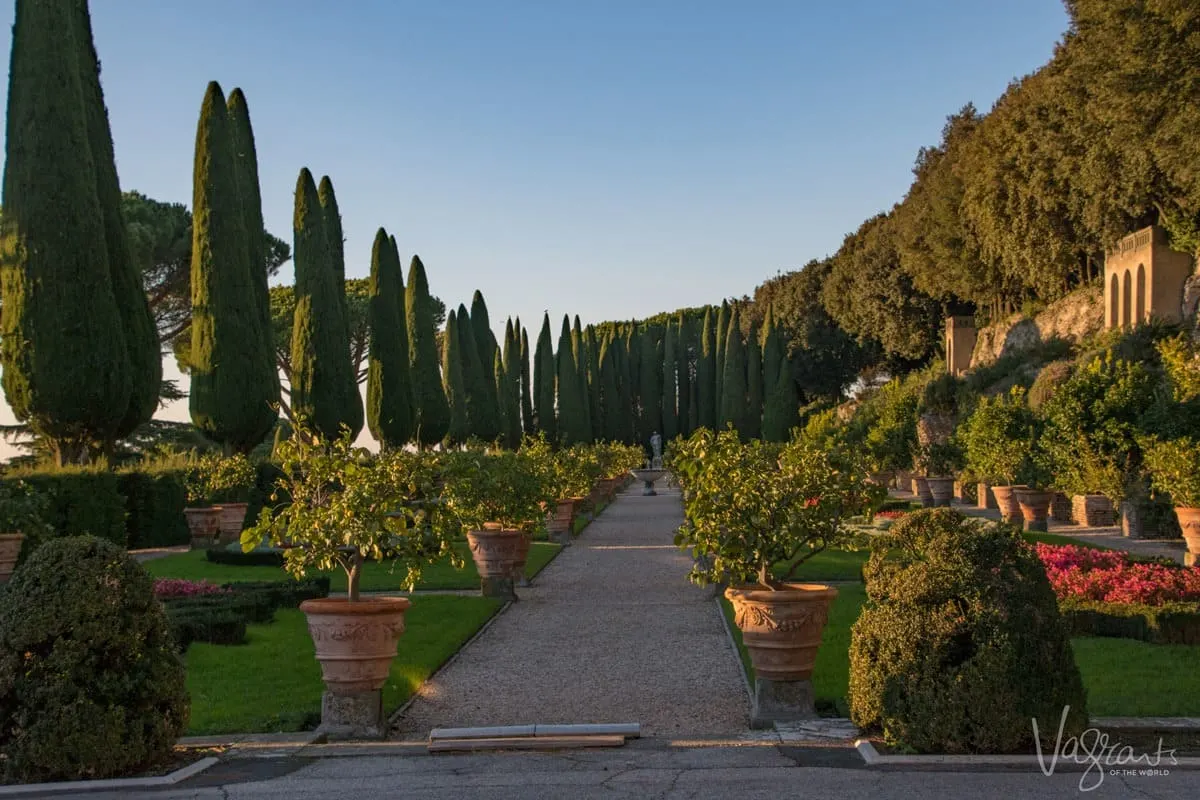
Day Trip From Rome: Got more time to spend in Rome? In just over an hour and twenty minutes by train, you can travel from Rome to Florence. A Florence day trip from Rome makes a fantastic extension to your Rome itinerary without the hassle of having to change hotels. See all the Best Things to do in Florence here.
Rome Travel Tips
Save Time & Money With A 3 Day Rome Pass
With just three days in Rome (or even four days), it’s important to have a plan and to try to avoid waiting in line as much as possible. Depending on when you visit Rome, some of the popular attractions can be PACKED, and you can spend hours waiting in line.
Above, I mentioned several instances where you can purchase skip-the-line tickets in advance, which I highly recommend.
Another great way to save time and money during your three days in Rome is by purchasing a Rome city pass.
There are three great options for city passes in Rome:
Each pass offers skip-the-line admission to at least a few sites, discounted entrance to other sites, and free public transportation.
I recommend checking each out, especially if visiting Rome during the summer. The OMNIA pass includes a skip-the-line entrance to the famous Sistine Chapel and St. Peter’s Basilica, which can save you hours just in the Vatican City.
Best Time to Visit Rome
While Rome is a year-round destination, there are definitely times of the year that are better to visit than others, especially if you want to avoid high prices and crowds.
- The shoulder seasons are always the best time to visit Rome. It is the best time to visit Europe. The months on either side of the summer peak season – April to May (Spring) or late September to October (Autumn). October is an especially great time to visit Italy and Europe.
- During the peak summer months of late June – early September, you can expect soaring temperatures, sky-high prices, and crazy crowds. Especially not ideal for those visiting Rome with kids.
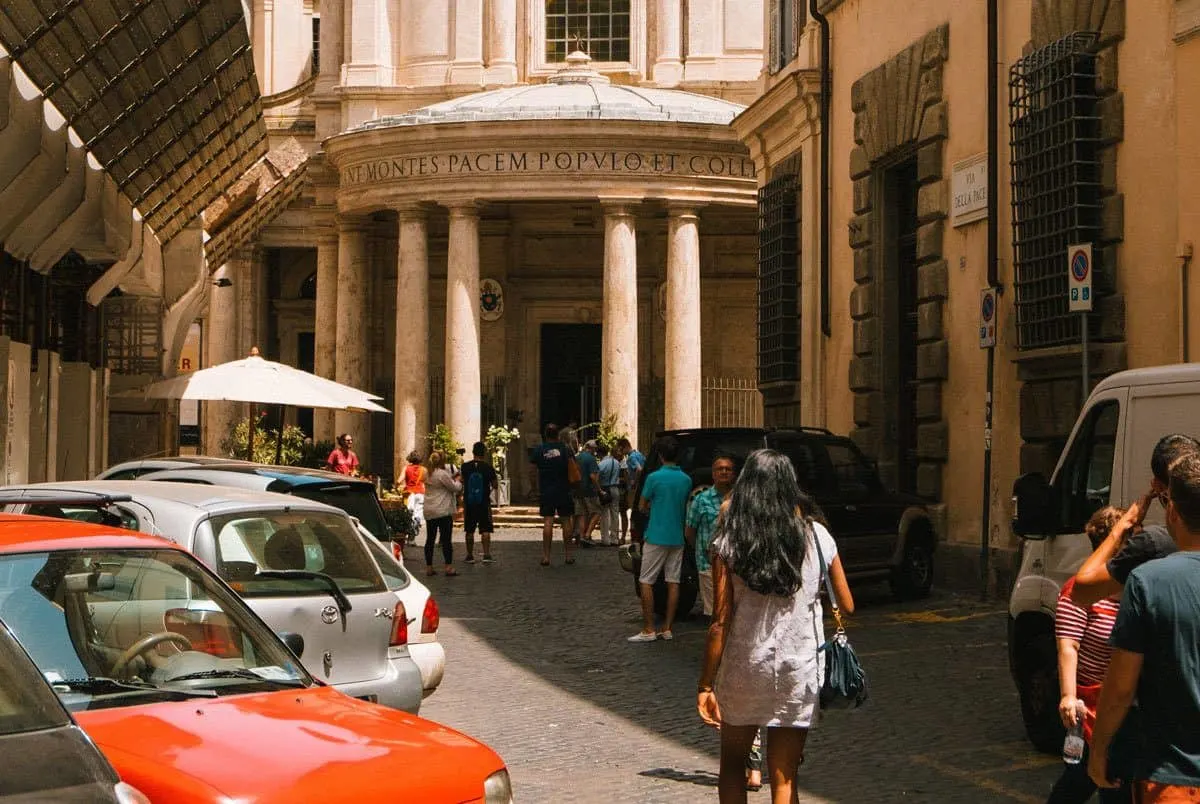
Getting To and From Rome Airport
Rome has two airports – Fiumicino (FCO) and Ciampino (CIA).
Most international flights will land in FCO, while national flights and some European flights will land in CIA. Regardless of which Rome airport you fly into, it’s easy to get to the city center.
Train From Rome Airport (FCO)
- The Leonardo Express train is the easiest way to get to Rome from FCO.
- The train connects FCO to Termini Station, the central station in the heart of Rome.
- The trip takes 30 minutes. Tickets are €14 each way.
- You must validate your ticket before entering the train. Tickets are valid for 90 minutes.
From Termini Station, you can take the local Metro system, which is very easy to navigate or take a taxi outside the station. Make sure it is a registered white-metered taxi.
Taxi From the Airport
Take a white, metered city taxi. The fare is fixed as set by the city of Rome based on one way for up to four passengers with luggage.
- Between FCO and Rome, the fixed rate is €50.
- Between CIA and Rome, the fixed rate is between €30 and €40, depending on your final destination.
Private Airport Transfers
Private transfer services will be slightly higher than the fixed rate taxi, but you will know the exact amount of the prepaid booking to your hotel door, the car will be nicer, and the driver will be at arrivals to greet you. You can pre-book a transfer from either airport here.
Shuttle Bus
A shuttle is the cheapest way to travel from either airport.
- Between FCO and Rome – The trip takes just under an hour with two stops in the center – Termini Station and Piazza Cavour near the Vatican.
- Between CIA airport and Rome city center – Termini Station takes approx. 40 minutes.
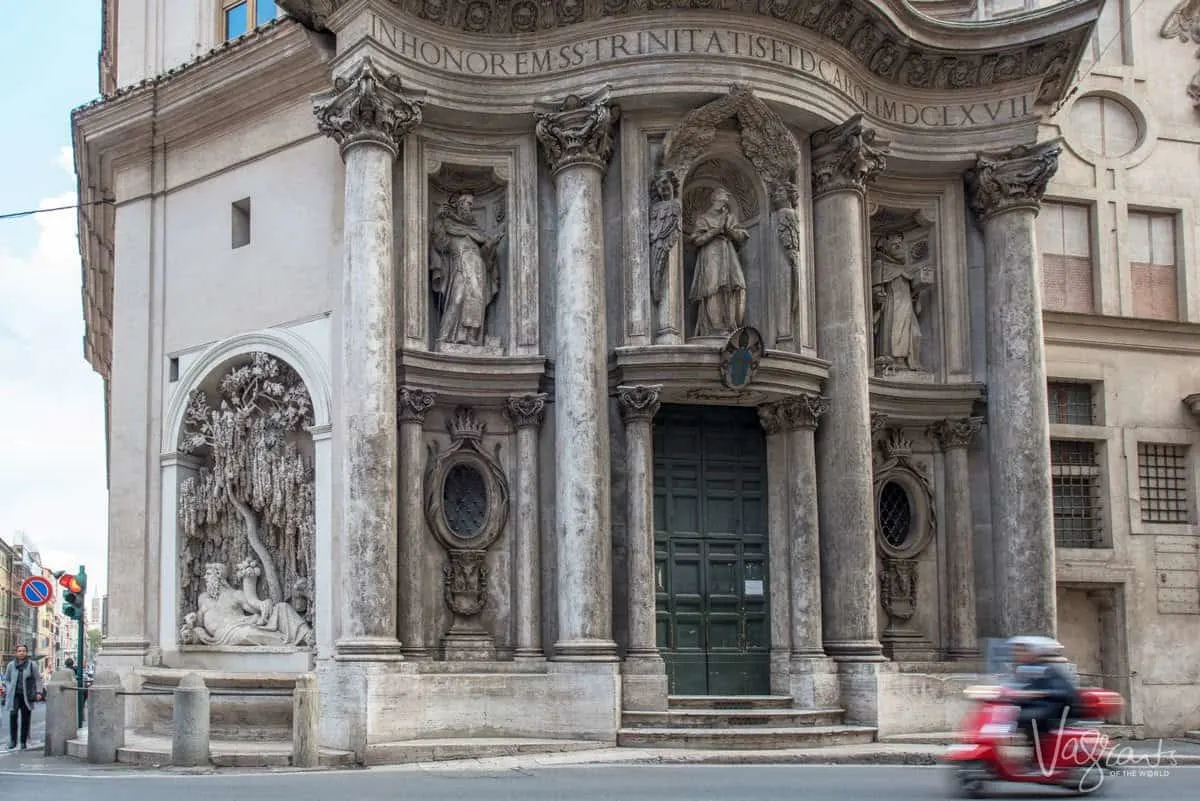
How to Get Around Rome
Rome is a walkable city, and walking is always my favorite way to explore and get to know a destination. However, Rome also has easy public transportation.
While there are buses, I recommend the metro instead. You’ll find most of the tourist attractions along lines A, B, or C, and it’s the easiest way to get to the Vatican.
You’ll need a BIT ticket to ride the metro, which can be purchased at any metro station, tobacco shop, or newsstand. Any of the Rome City passes I mentioned earlier include free public transport.
A hop-on hop-off bus is another way to get around the best attractions in Rome. It will drop you off in front of the tourist attractions and offer scenic views of the city as you travel.
Rome Packing Essentials
- The best time of year to visit Rome is the shoulder seasons of Spring and Autumn. This doesn’t mean you won’t get caught in a shower. A lightweight, packable rain jacket is always a handy travel companion.
- You will be doing a lot of walking in Rome. We suggest comfortable walking shoes that will be suitable for many occasions. There are plenty of stylish walking shoes on the market these days, perfect for sightseeing through to casual dinner.
A good anti-theft handbag for the ladies or an anti-theft messenger bag for the gents will go a long way to keeping your valuables safe, especially in crowded tourist spots where pickpockets can be rife.
You Might Also Like: Discover the heart of Italy with these traditional Italian recipes by region and learn how to recreate centuries of culinary tradition at home.
Related: Backpacking in Italy? You Need These Italy Travel Tips
Luggage Storage in Rome
Depending on your arrival and departure times, you may want to explore Rome before you check into your hotel or after you’ve checked out.
Luckily, there are several options for luggage storage in Rome.
- Roma Termini Station. This is the best luggage storage option for most in Rome, as it’s where lines A & B stop, along with the airport train and shuttle. The storage is across the street from the station and you can pre-book space online.
- Historic Center. City Center Luggage Storage has several locations to drop off your bags, including Venice Square, the Pantheon, and Vatican City.
Shopping in Rome
If you want to add some shopping to your 3 day Rome itinerary, I can’t say I blame you. The city is famous for it, after all. Here are the best places to go:
Via Veneto & Via del Corso
Looking for the best places to shop in Rome, head to Via Veneto and Via del Corso.
Via Veneto is one of the most expensive and elegant streets in Rome. Immortalized in Fellini’s La Dolce Vita, Via Veneto has attracted a jet-set crowd since the 50s’. Along with famous hotels, restaurants, and bars, you’ll find a great range of shopping options, from antiques and vintage to high-end designer stores.
While not as famous as Via Veneto, Via del Corso offers many shopping options, from international stores to boutique and designer brands.
Galleria Sciarra – The Hidden Art Nouveau Courtyard
Make sure you seek out the beautiful Galleria Sciarra. Only a few steps from the Trevi Fountain and the Via del Corso, the largely unknown, hidden courtyard is a feast of Art Nouveau. Gorgeous frescoes in brilliant colors painted by Giuseppe Cellini celebrate women in the various phases of life.
Built in the late 19th century for the wealthy Sciarra family, the opulent courtyard was meant to be a shopping mall.
It would have been the most beautiful in Rome if it came to fruition.
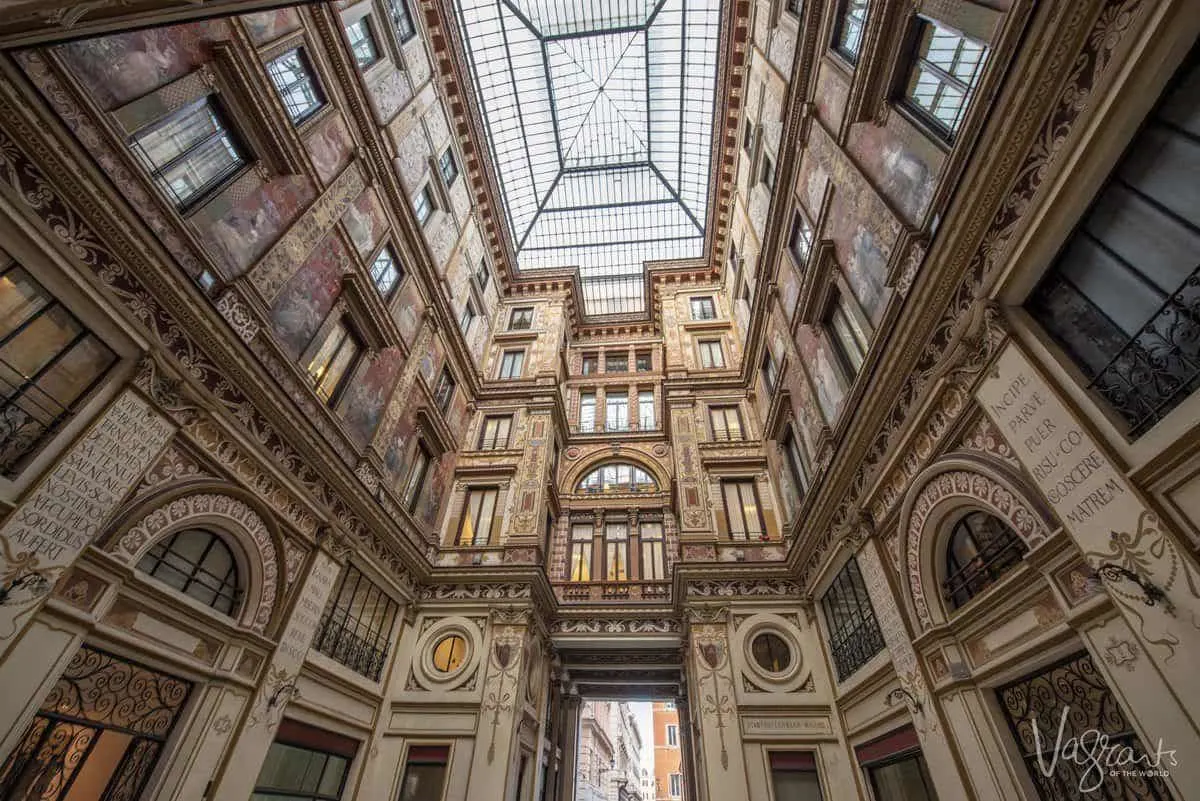
Rome Safety Tips
Chances are, you won’t have any safety issues during your three days in Rome, but there are a few things you’ll want to be aware of.
- Keep a close eye on your things. Rome is packed with scammers, fraudsters, and pickpockets. Be diligent with your belongings at all times, especially in crowded tourist areas – even in St Peter’s Basilica.
- Do not accept any “gift” from strangers, such as a flower, crafts, or even handbags. Don’t even handle them, no matter how much the well-meaning person forces them on you. You will be harassed to pay for merely touching the “gift.”
Related: Keep your belongings safe in Rome – Read our guides to the best anti-theft handbags for travel and the best anti-theft travel gear.



